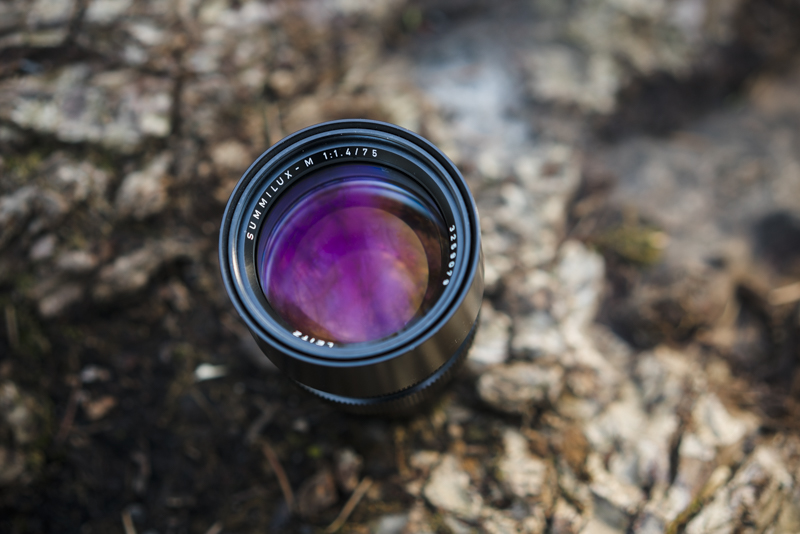
The Leica 75 Summilux (75 Lux) is legendary. It’s a compact, fast, short telephoto rangefinder lens designed for portrait and shallow depth-of-field photography. Prices and praise for the 75 Lux haven’t lessened over the years, and it’s said to be one of Walter Mandler’s favorites works. You’ll be hard pressed to find a clean copy for under 3.5k. Let’s dig deeper.
Click here to see all 75 Lux review photos and others at larger resolution on my flickr album.
Note 1: Throughout the review, FE or Sony 85 means the 85 f1.8, GM 85 refers to the GM 85 f1.4, and the Samyang is the manual focus version unless specified.
Note 2: For a more extensive look at the finer distinctions between the 75 and 80 Summilux, read this.
Contents
Specifications
| Focal Length: | 75mm |
| F-stop: | 1.4-16 |
| Weight: | 600g |
| Aperture Blades: | 10 (unrounded) |
| Hood: | Permanent (retractable) |
| Mount: | Leica M |
| Internal focus: | No |
| Filter Size: | 60mm |
| MFD: | 0.8 (will focus closer) |
| Environmental Sealing: | None |
| Years Produced: | 1980-2007 |
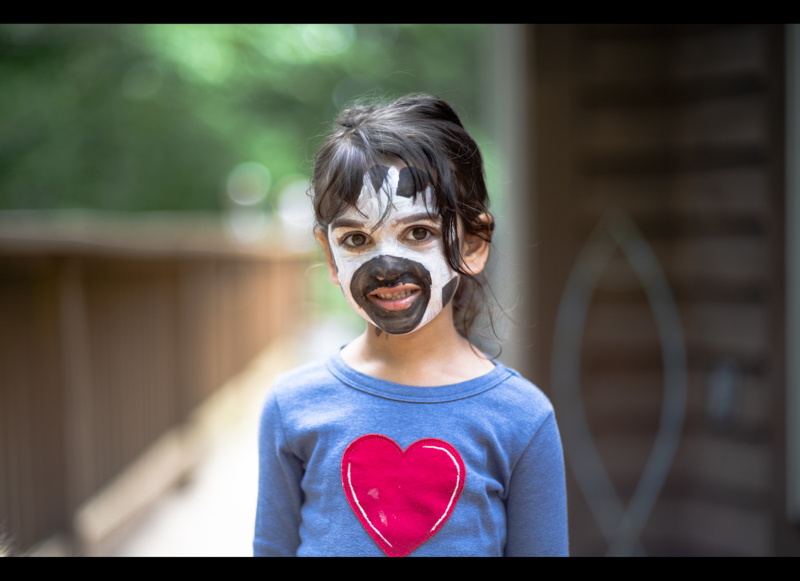


History
You can read more about the somewhat complicated and extended production run (and other intricacies) at this link. The 75 Lux has been out of production for 12 years, and was originally released in 1980. Recently, it has been succeeded by the Leica 75mm f1.25 Noctilux. While there is talk of differences in image quality between 75 Lux production runs, I have seen/know of no official documentation that confirms optical alterations. Given the long production run, it’s very possible there were coating tweaks resulting in slightly different levels of contrast, fringing and flare. The 75 Lux has 3 versions and 1 variant:
- Version 1 was produced in Canada, and is distinguished by its smaller size, lighter weight (490g), longer MFD (1 meter) and removable hood.
- Version 2 was produced in Canada, weighs 600 grams, focuses closer than the stated 0.8m (MFD) and features a retractable hood. This is the most common copy, and the one being reviewed.
- Version 3 was produced in Germany, looks identical to version 2 but is 40 grahams lighter. MFD and hood are identical to version 2. Version 3 commands a slight premium over the earlier versions.
- The lens was also produced in the sister SLR mount, Leica R. This version is called the Summilux R 80mm f1.4. It’s predictably larger but less expensive, and offers the same desired rendering signature with an identical opitical formula, though I found my two copies to be slightly less corrected than my 75 Lux. I have confirmed this anecdotally with others who have shot both the 75 and 80 Lux, but have not seen any systematic testing.
Build Quality/Handing
Typical Leica, the 75 Lux is built superbly. The lens is compact but hefty in hand. The focus ring is well-dampened, traveling 180 degrees from infinite to MFD. The aperture ring distinctly rests at half stops. Being a manual focus lens, we get hard stops at MFD and infinite. The hood on my copy has remained tight, and does not creep or extend when it shouldn’t. The lens extends about 1.5 inches when focusing to infinite. The 75 Lux is not environmentally sealed in any way. There is focus shift, but with mirrorless cameras you won’t have this issue. In short, it’s about perfect in terms of build and handling.
The lens balances well on the a7r2 and a7r3, but I found it a bit front heavy on the original a7 series.
Here is a size comparison with FE 85 1.8. While they are similar in size, the FE is bulkier but lighter. The Lux also isn’t adapter or extended.
Focusing
AF: No autofocus on this lens.
MF: I would rank this lens as about average to focus precisely. In actual use, the ability to focus accurately and somewhat quickly is extremely important. I can get some shimmering pixels on my A7r2 wide open. I found it even easier to focus on my a7s and much easier on my A73. Using magnification, the lens is a breeze. I don’t use focus peaking as its too inaccurate for critical focus. The focus throw is not overly long at working distance. The focusing experience for general use and portrait shooting is quite pleasant.
Resolution
Infinity
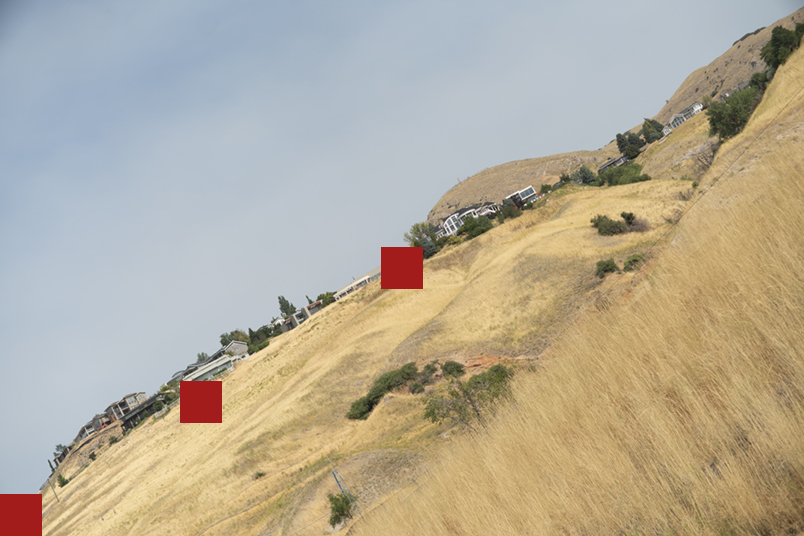
f1.4: Sharp centrally, but spherical aberrations blanket everything. Only the central third of the frame is sharp.
f2: Significant bump in sharpness extending to the outer midframe. Center is great, midframe is “good,” and corners “ok.” Spherical aberrations are significantly lessened, so clarity gets a boost.
f2.8: Center is razor, mid frame is “very good”, extreme corners are “good”. Very slight contrast bump.
f4: The center and mid frame are razor sharp, extreme corners are now “very good.”
f5.6: Razor sharp everywhere.
f8: Razor sharp everywhere.
f11: Diffraction begins to slightly reduce effective resolution.
Summary: At f1.4 at infinite it’s simply not a landscape lens. At f2 resolution and clarity boost, giving highly usable but not critically sharp images, but the corners are a bit behind. At f2.8 – f11 the performance across the frame is strong with minor differences, but resolution and contrast are biting by f4.
Notes: Luckily there is no mid zone dip even though the 75 Lux is not a native e-mount lens.
Near (MFD to 1 Meter)
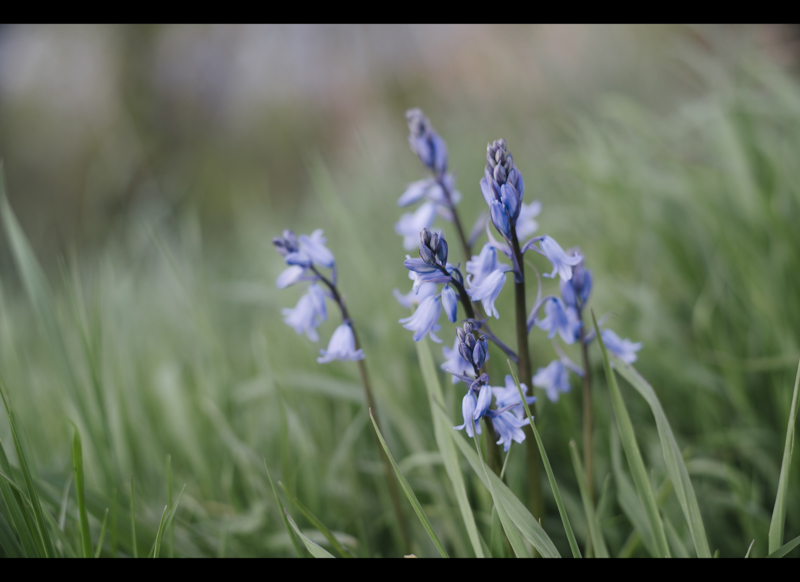
The Lux 75 doesn’t feature an aspheric element and isn’t corrected for close distance. However, the 75 Lux unofficially goes down to about 0.6 meters which is desirable, but you’ll find increased spherical aberrations wide open at MFD. As at infinite at f2, chromatic and spherical aberrations diminish, sharpness spreads to the outer frame, contrast increases, and bokeh smoothes significantly. I enjoy the short MFD, often preferring to shoot at f2 from MFD to a meter with gorgeous results.
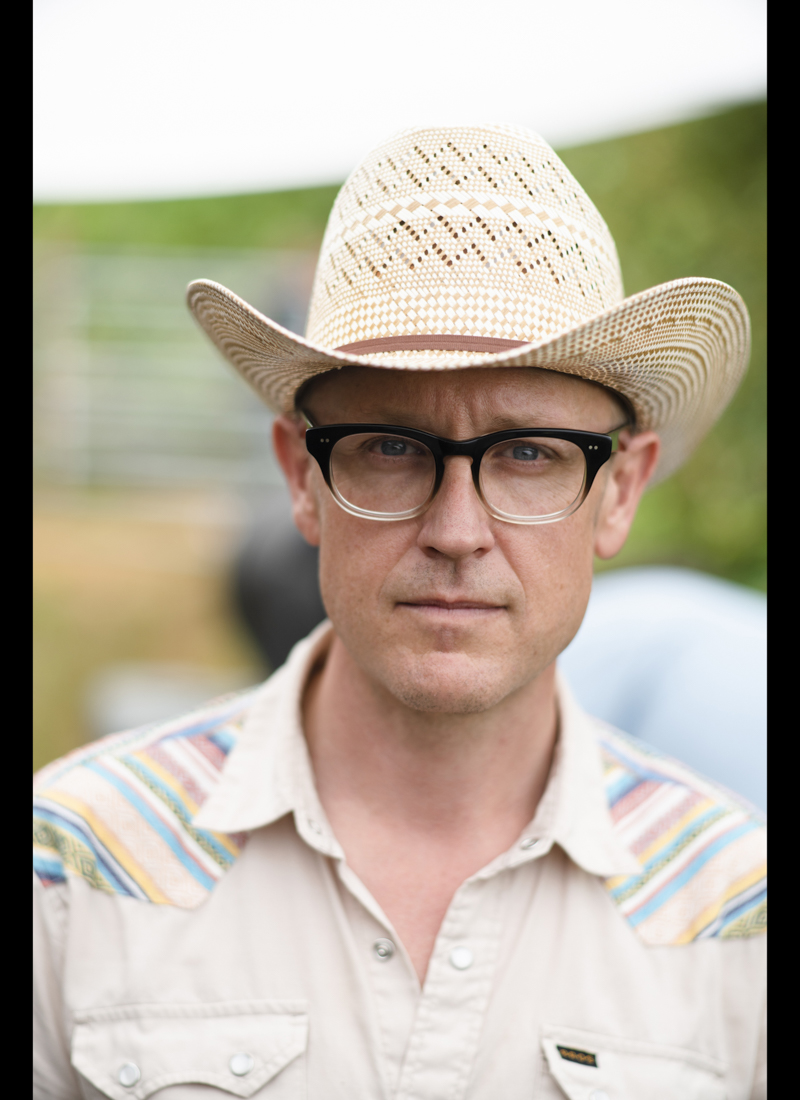
f2 is a great aperture for portraits for the above listed reasons.
Flare Resistance
As you might expect for a fast vintage lens, flare resistance is subpar by today’s standards. Flare is a bit complicated to asses, but you can provoke significant ghosting (purple blob artifacts) if you try (and if you don’t).
Strongly Backlit
There is noticeable ghosting and veiling flare reducing contrast throughout the frame. See below:
Stopping down does not entirely alleviate the issues; it only changes the ghosts shapes and increases contrast, though it remains diminished even stopped down. I have not really found the hood to help much, so I don’t use it.
Contra light
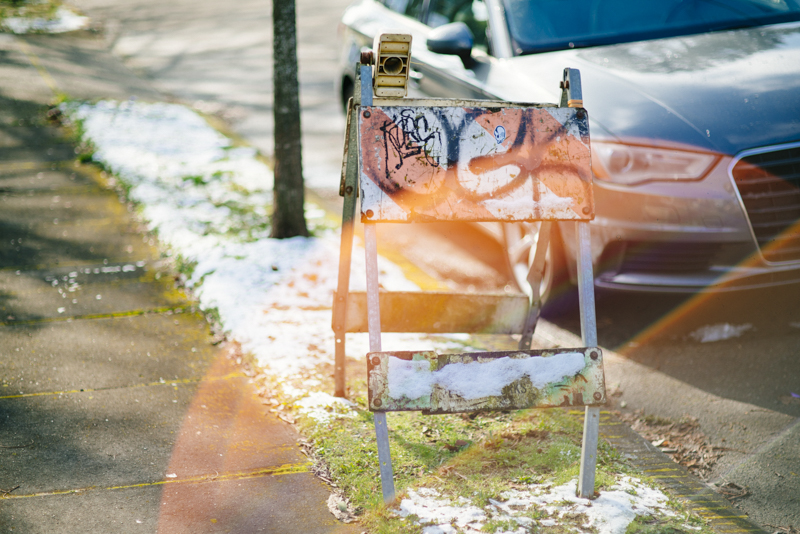
I have found off angle light sources in/just outside the corners of the frame induce rainbow flare like below:
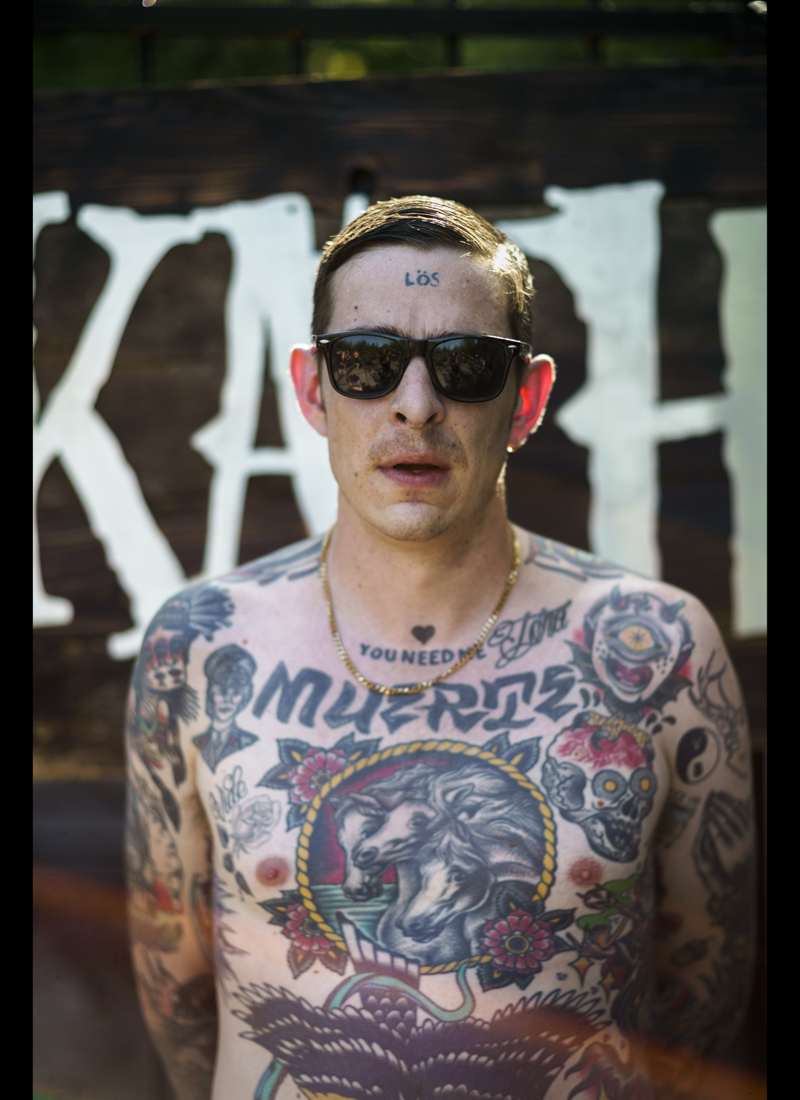
Some may like this flare as contrast is much better than backlit situations like above. I often enjoy and use this to positive effect despite it’s a technical weakness. Using the hood or a hand can address the ring flare in most situations.
Bokeh
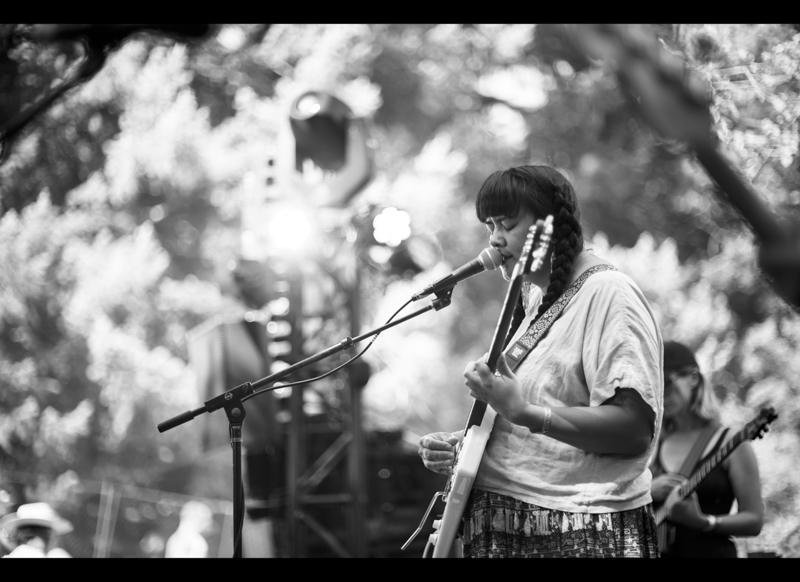
At this focal length and aperture, separation isn’t hard to achieve. While bokeh is somewhat a matter of taste, we do have technical aspects to examine.
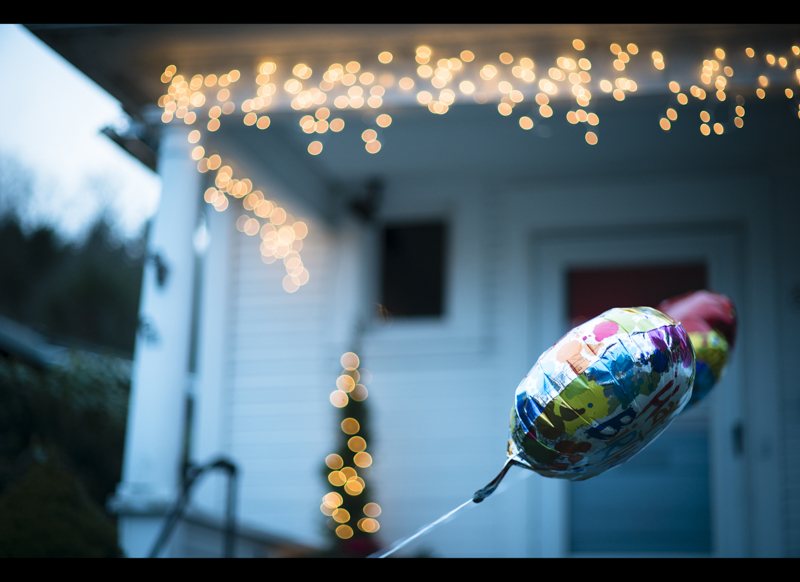
Portrait Distance
Below is a shoot out with the 75 Lux, FE 85 and Samyang 85 (MF) at portrait distance of 2-3 meters. My Samyang has some of the smoothest bokeh and transition of any 85, very comparable with the GM 85, though with slightly more fringing but less contrast (here).
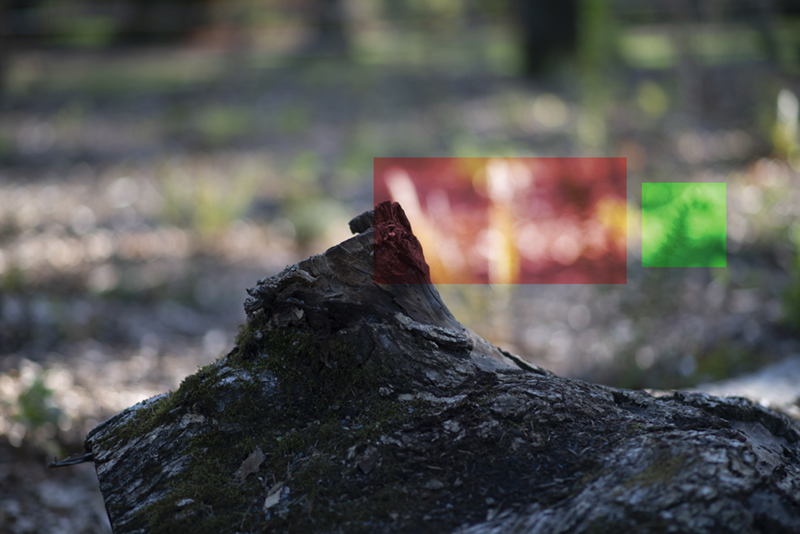
The log is about 8 feet away, and the background is structurally busy with contrast. The bottom half features all 3 portrait lenses, wide open, to show their renderings. Unsurprisingly, the Samyang is ahead with the most abstracted and smoothest bokeh. Wide open, the 75 Lux trails with the busiest rendering–the most lateral CA, harsher contrast and similar cat’s eye to the FE 85, and much more than the Samyang. However, f2 is a sweet spot for the Lux in terms of bokeh–it’s essentially identical to the Samyang and smoother than the FE 85. Oddly, at f2.8, it falls behind the other lenses again.
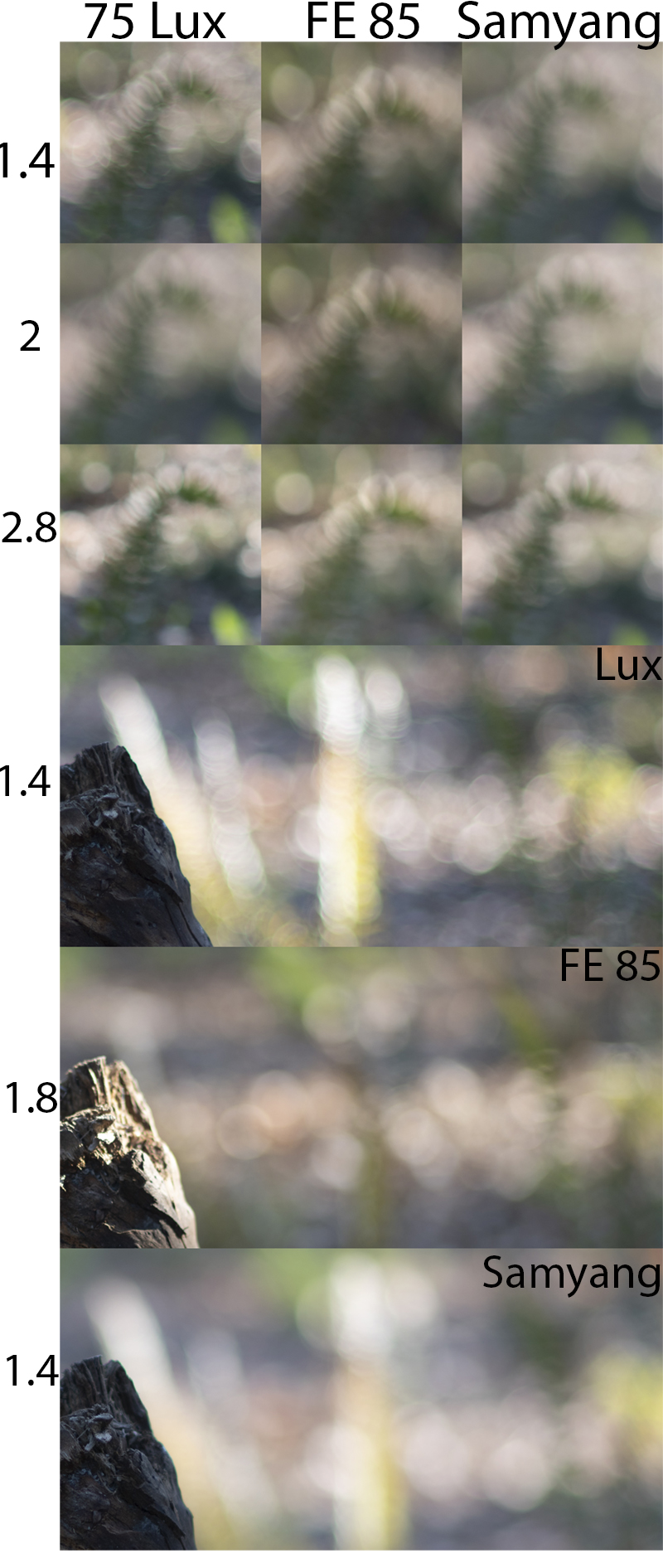
Below is a scene with challenging bokeh. The Lux handles it well by stopping down to the f2 bokeh sweet spot.
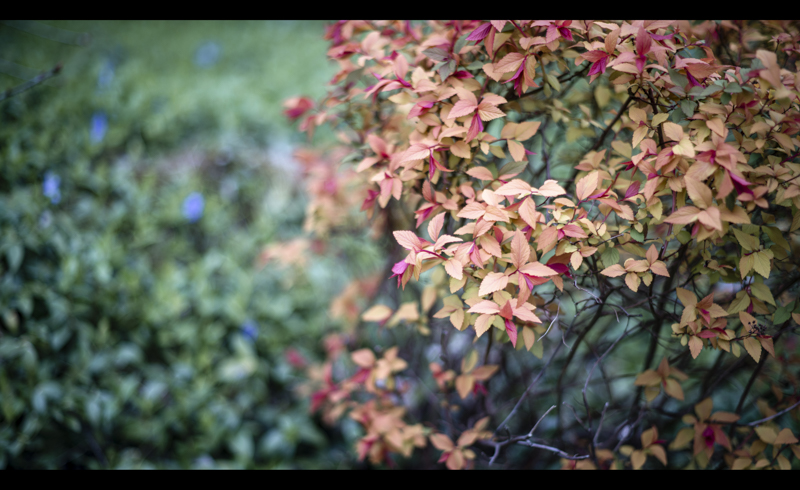
Below are portraits shot at f1.4. While the bokeh is busier, I rarely find it to be distracting. Here are a couple sample portraits:
-
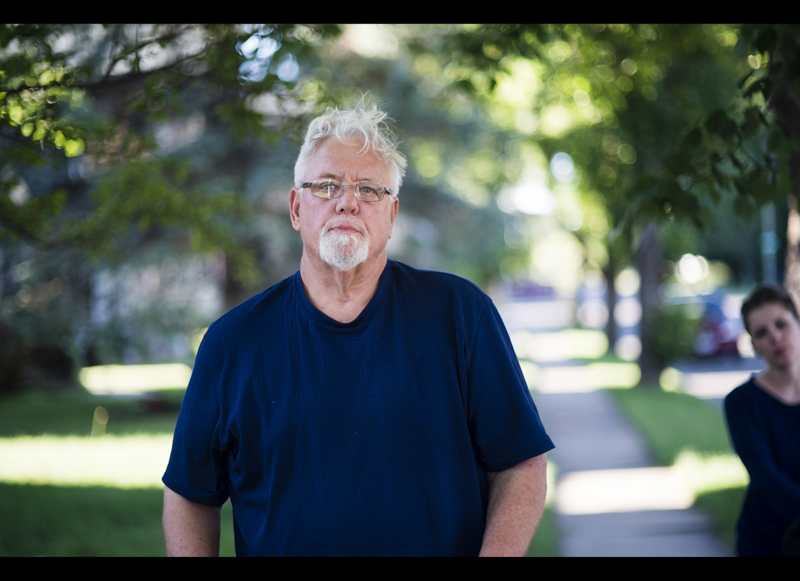
75 Lux @ f1.4 -

Lux 75 @ f1.7 -

Lux 75 @ f2
Transition zone
Here is a real world scene with our non-paid, non-volunteer model shot with both lenses wide open. Note the Samyang’s smoother background transition and more abstracted bokeh with less outlining. Interestingly, the Samyang has more nervous foreground transition and purple fringing.
Note: The white balance has been matched, so the fringing and color differences you see are native to the lenses. Overall, the Samyang again has the smoother rendering.

Decagons
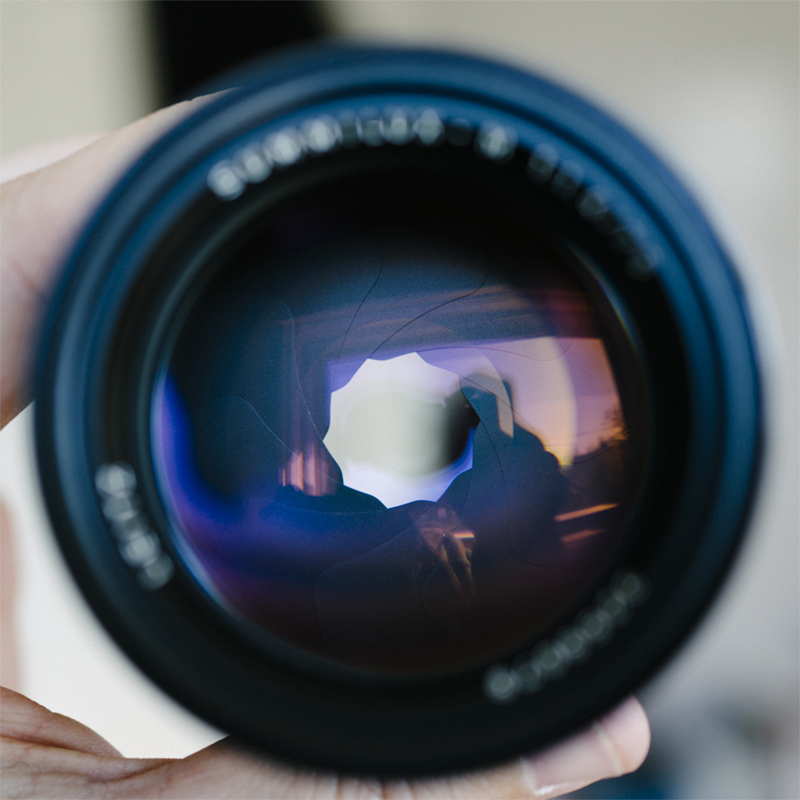
This one is common on older lenses but annoys me nonetheless. We get 10 aperture blades, but I wish they were rounded. We do get “ninja star” bokeh.
Here’s a series showing the behavior as we stop down.
Bokeh balls
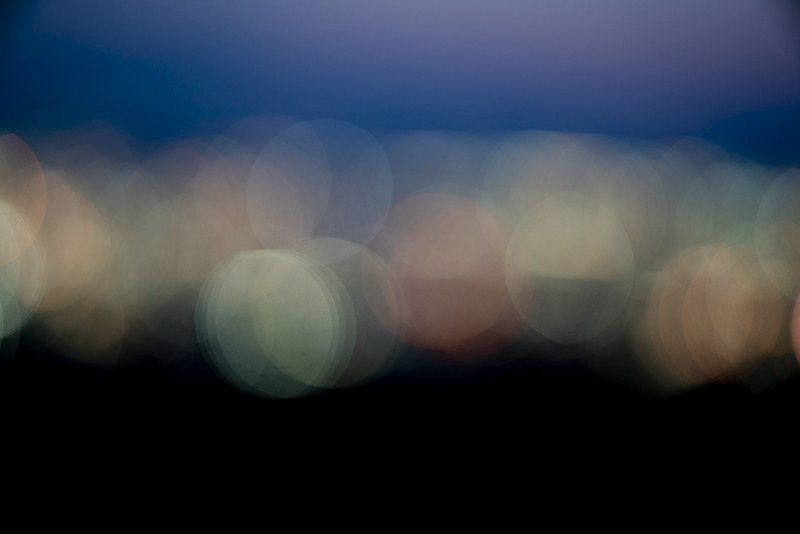
No aspheric elements used, so no nasty onions rings.
Cat’s Eye
We do get cat’s eye bokeh caused by mechanical vignetting, like many portrait lenses. Note the perfectly circular center, and the quickly deteriorating progression into the outer frame. This is higher than other lenses it seems due to the relatively narrow 60mm filter thread.
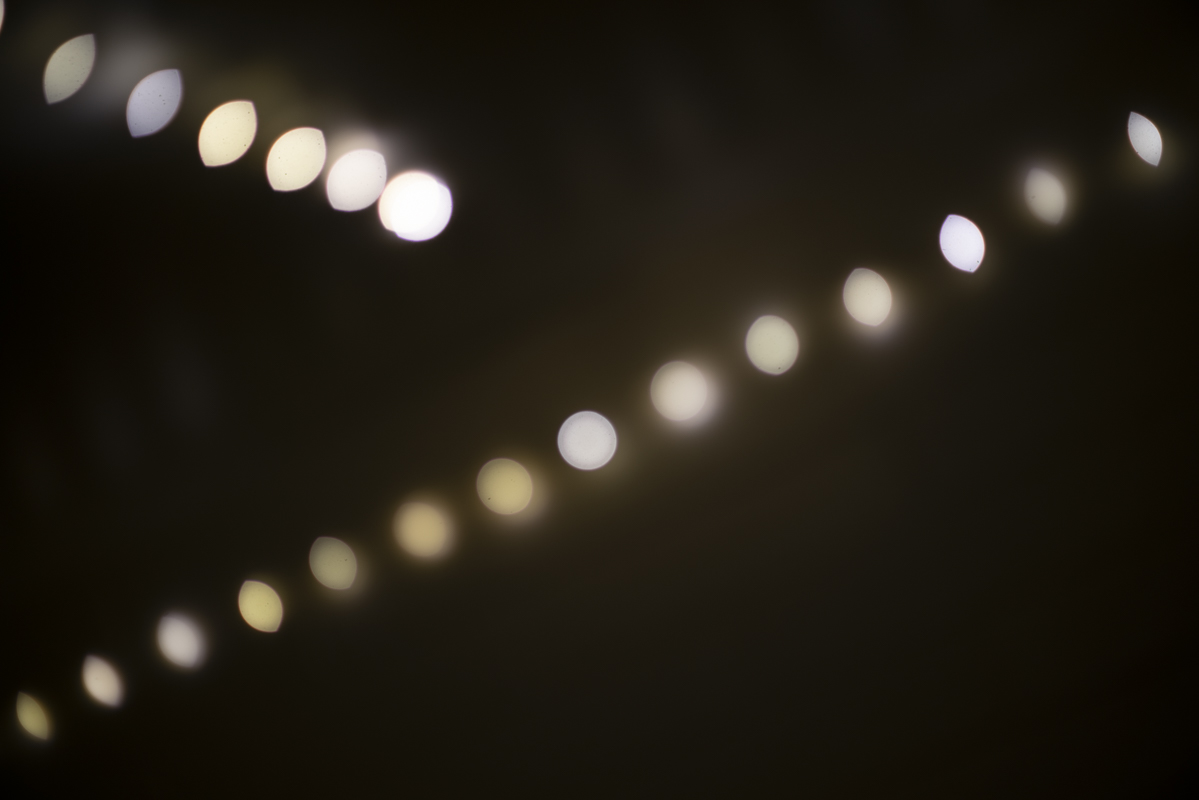
Chromatic Aberrations
We see CA. In my experience, it’s on par with similar fast lenses of that era. In highly contrast scenes, you’ll want to correct it. At f2, it’s minimal in real world shooting, but there are trace amounts even at f4.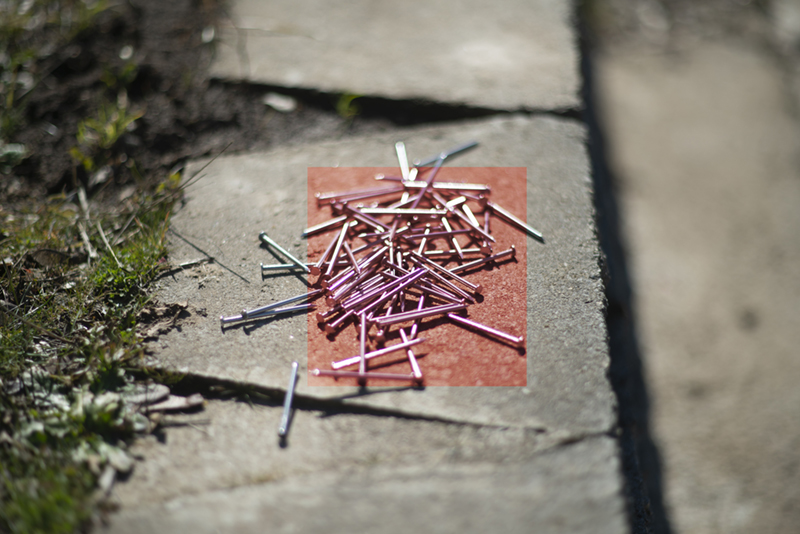



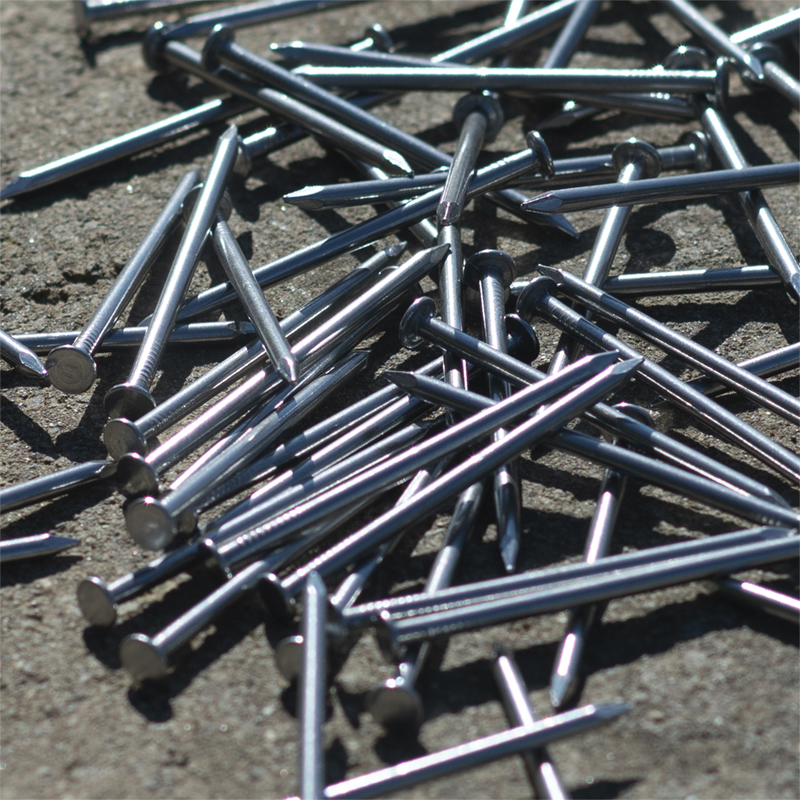
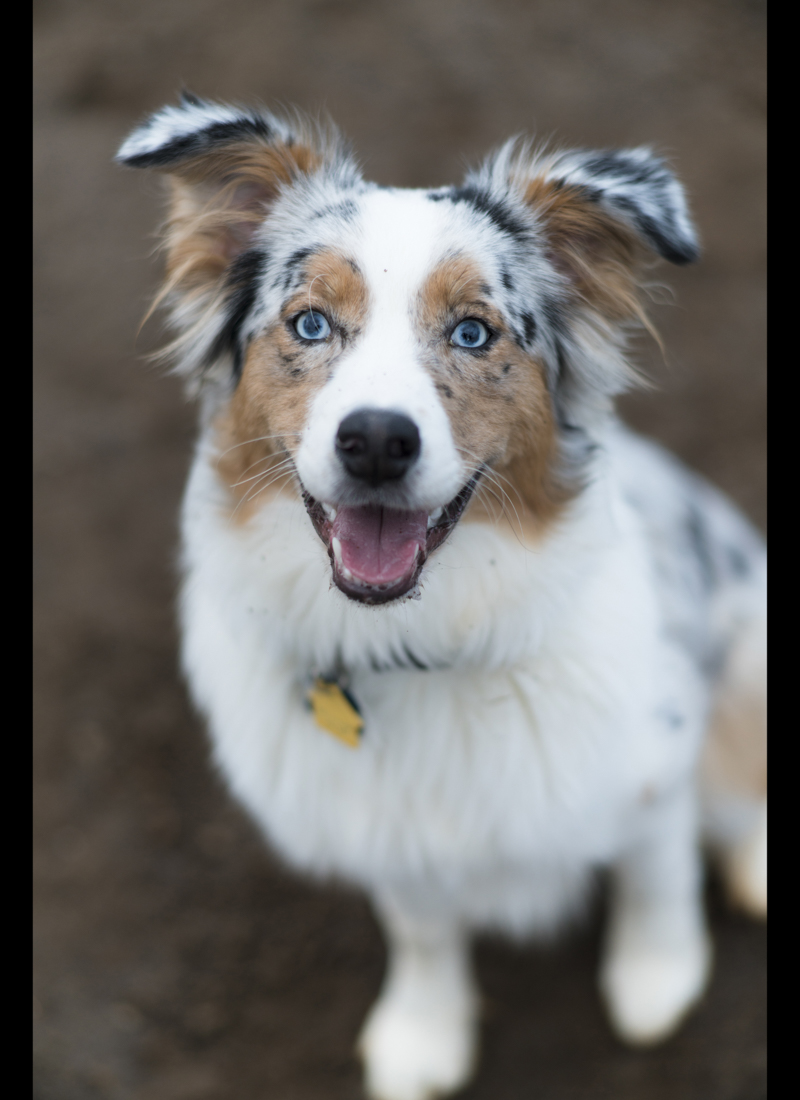
Sun Stars
Update coming.
Coma
At f1.4, blobs, at f2 decent, by f4 perfect.
Vignetting
As a fast compact range finder lens, we expect some vignetting. Nothing stands out here specifically. LR provides helpfully provides a profile.
f1.4 – 2.3 stops
f2 – 1.15 stops
f2.8 – 0.95 stops
f4 – 0.8 stops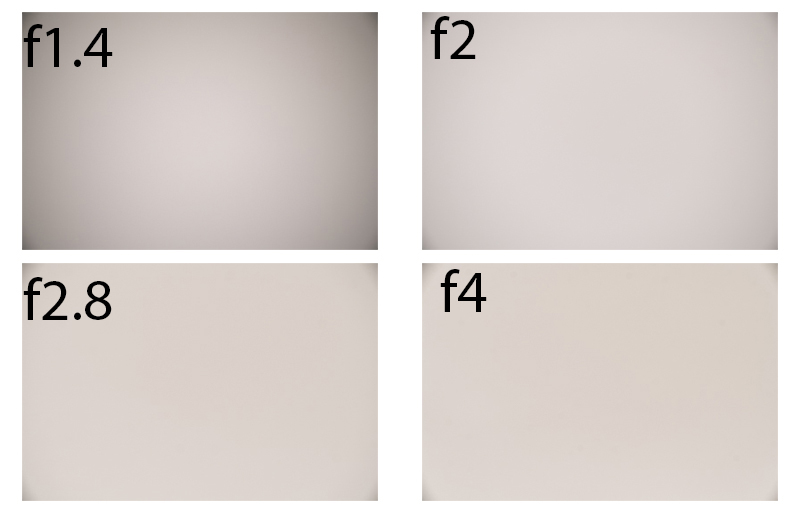
Rendering
Rendering is a most subjective thing, and specifically important for portraits. And portraiture is where the 75 Lux earns its reputation. It’s a delicate balance, being composed of technical and subjective aspects. What I choose to look at extensively is color. And it’s a bit of a deep dive, so feel free to scroll past to the “Examples” section below.
Color
As they say, color is a language of its own. Some think color should be accurate, others pleasing. If pleasing is the answer, people don’t agree on what pleasing is. On that note, I have found the Lux colors to be absolutely spectacular. They are rich and nuanced but gentle. But color is difficult to measure and therefore quantify.
I have found color and contrast to be of enormous importance in real world usage, though I haven’t found a test which sufficiently translates the distinctions as they affect images (in my opinion).
Here is an illustrate test I tried. Below is a color wheel from a design book. Shot at 1 meter, cropped to the center of the photo, both lenses wide open, on a tripod, ISO 100, EV 0.0, IBIS off, manual focus, with identical indoor lighting, and 2 second shutter delay. White balance has been equalized precisely. So was exposure. And that’s the problem.
When I equalize exposure, the Lux is about a half stop brighter than the Sony, meaning saturation will be affected. Saturation and luminosity are tethered: if you brighten the exposure, colors become more luminous and less saturated. I used the histogram in LR to make sure the red, green and blue values on the white portion just outside the circle calibrate at red = 88%, green = 86% and blue = 86%. This results in nearly identical images:
And this is how it looks when both photos are crudely adjusted for exposure using an identical +0.85 from the Exposure slider in LR, not the histogram values.
You can easily see differences, between sets and lenses. So, I’ve included values for both. “Equal Histogram Values” measures when the exposure is even, accounting for transmission using histogram values. The “Underexposed” column is for the Sony bumped only the same as the Lux with +0.85 using the slider. This make the Sony relatively underexposed, which is closer to real world shooting (though you might just address this in post). I did this as field usage with the Lux files will deceptively appear lighter and less saturated because the images are brighter. We usually lean on the cameras to meter, not accounting for transmission differences in lenses. If you really even out the exposures, it’s quite close.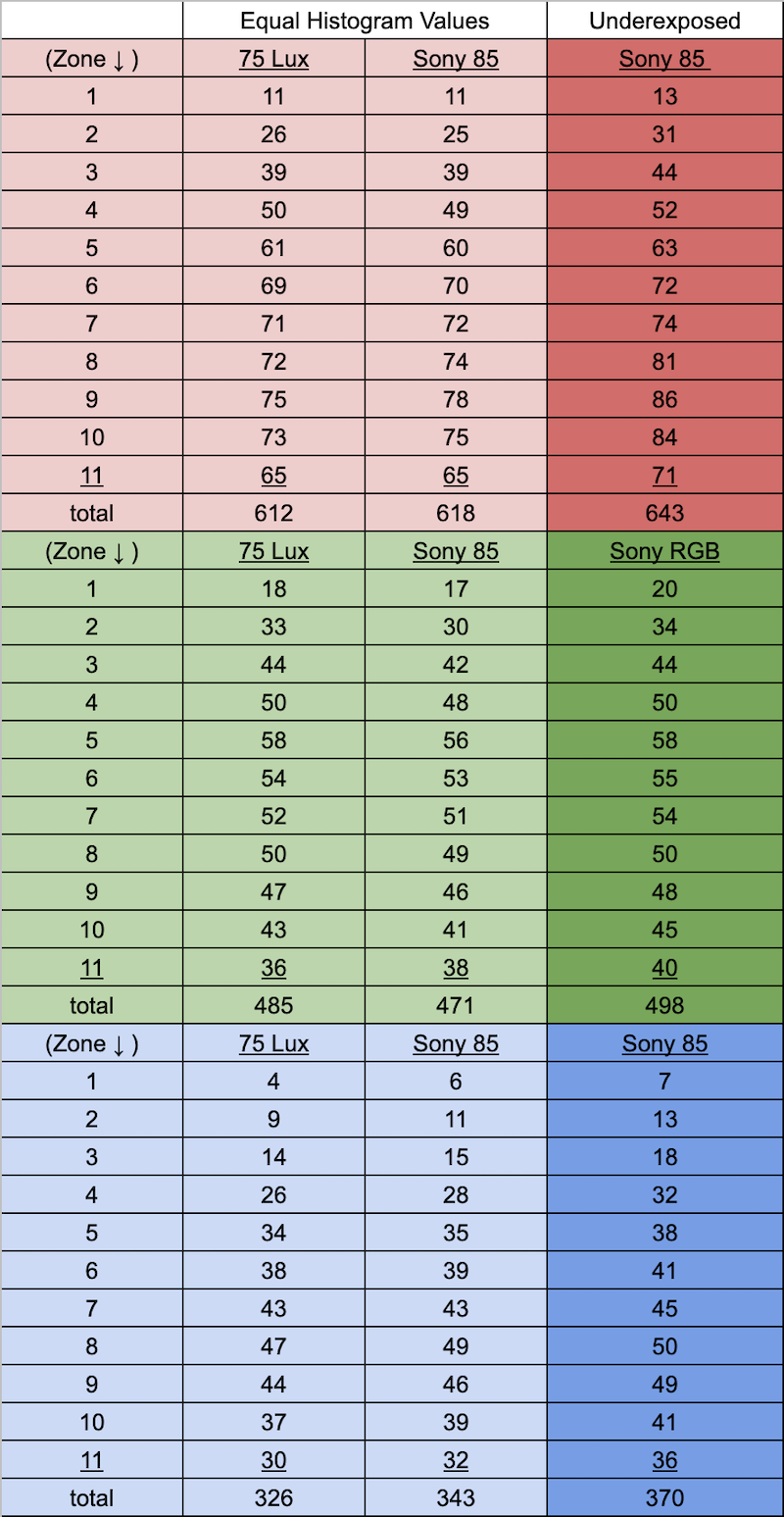
For my own curiosity, I dropped the Lux exposure and watched the saturation levels increase as they did for the Sony.
For my color values, I used the “Color Sampler Tool” in Photoshop. Set to 11×11 area which gave consistent results and set to HSB. HSB gives a simple percentage for saturation–100% is the most saturated, 0% is gray (monochrome). I measured red, green and blue like so (zone 11 was measured as well though now shown here):
Below are the findings for the Lux 75 and FE 85 simplified. As you see on the first table, the Lux 75 has very similar color saturation to the Sony 85 1.8 when both were shot wide open indoors. And the Sony 85 is known as a contrasty lens. While this may surprise some, it’s not surprising to me. The colors from the Lux are known to be vibrant, and that has been my experience.
| Total Saturation | Lux | Sony |
| R+G+B | 1,423 | 1,432 |
As far as color palate, I was curious. I divided the amount of each color by the aggregate of red, green and blue. So for red on the Lux, 612/1423=43%. I thought shooters might be curious to see the differences. As most Lux users know and is verified, it’s a warmer lens, pushing red and green but not blue. I measured hue differences between lenses but did not include it here. Broadly, the Sony pushes blue more, but less green, and red is closest between the two lenses.
| Palate | Lux | Sony |
| Red | 43% | 43.20% |
| Green | 34% | 32.90% |
| Blue | 23% | 24% |
Color Summary:
The Lux has a somewhat contradictory reputation as being soft but rich, gentle but vibrant. This test and data speak to this. The Lux colors, even wide open, are saturated, quite similar to the FE 85 indoors. But the Lux blankets finer textural information with spherical aberrations–compare the inside of the squares above. These spherical aberrations make the borders weak, bleeding colors together, giving the Lux it’s trademark glowy softness but vibrance. Additionally, I did not get into it, but the the Lux has more slightly luminous for values for red, green, and blue at the same histogram exposure level. Meaning that colors appear saturated, light, and smooth as they flow into and out of each other. This is the magic that many shooters talk about with the Lux as I can best quantify it. While the charts and numbers may (or may not) appear significant, in real world shooting the Lux images have a distinct feel.
Examples
– As indicated, the Lux has saturated luminous colors, but retains less textural information than most current lenses, making for a distinct signature.

– Focus fall off does not appear especially fast or slow compared to the many other fast 75-100mm teles in my experience.
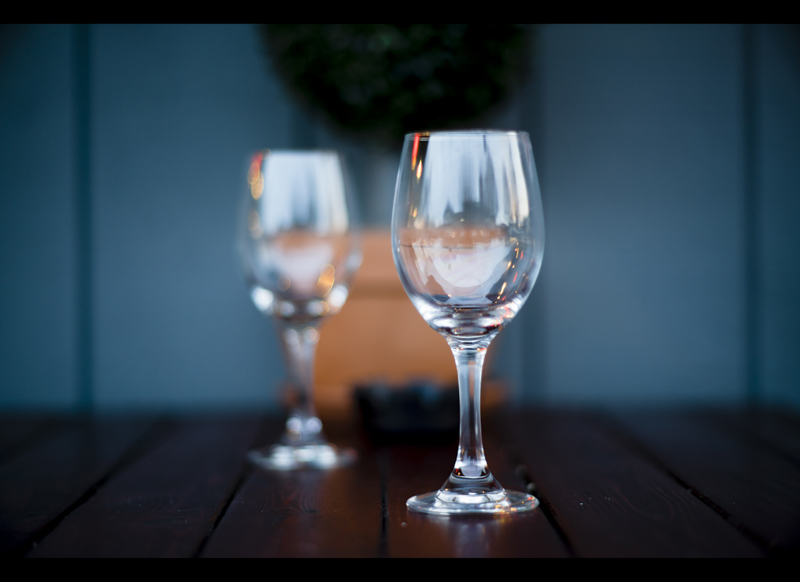
– This type of image is very Lux-like to me with it’s rich character but gentle feel and saturated colors.

– Images have no specific color cast I can detect, but colors are on the warm side.

– I enjoy this lens for black and white. I find the handing of midtones and highlights delicate.

– A portrait at f1.4 with minimal processing.

– By f2.8, the imperfections have been corrected but the fantastic color and signature still remains, but the lens has lost its portrait touch.

– While most of the photos in this review are near to mid distance photos shot at f1.4 to f2, I have used the Lux for landscapes with great results (just watch the flare!).
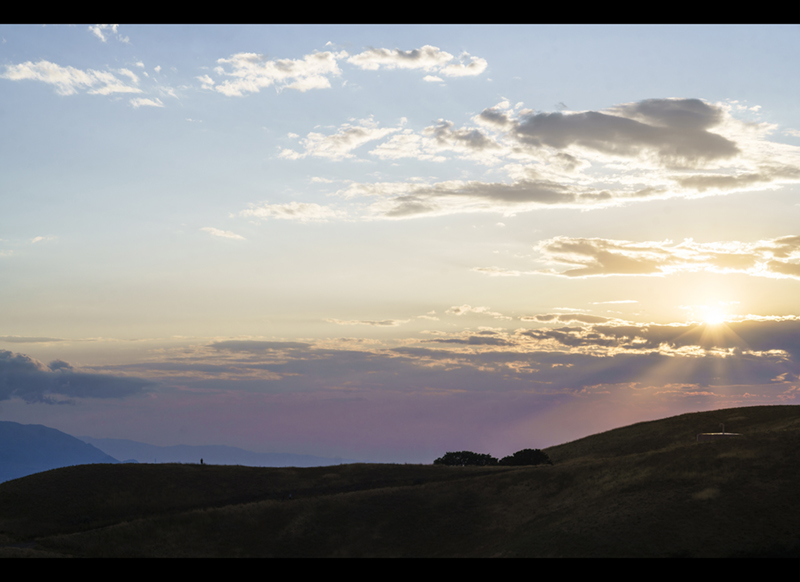
Alternatives
There are numerous options in this range now, with several being released quite recently. So I’ll just touch on some:
Sony GM 85mm f1.4 – Optics are clearly better corrected, and it has AF. Used prices are also cheaper by about 60-70%. GM 85 bokeh is more abstracted with smoother transitions and less outlining. It has better CA control, superior flare resistance, better sharpness globally till peak apertures and impressive mechanical vignetting corrections for suppressing cat’s eye. Size and weight are significantly greater, the AF is slow, audible and the MF is fly-by-wire. It’s offers a much different look and experience than the Lux. The GM 85 is beloved and with good reason. Review here.
Sony FE 85mm f1.8 – Extremely sharp, better corrected for CA, flare, fast to focus, lighter, less total bokeh capability at f1.8 but smoother bokeh at most comparable apertures, environmentally sealed and many times cheaper with a great performance/value balance. The rendering lacks something to me. It’s a fly-by-wire as well, but I like the lens but sold it recently. Review here.
Samyang 85mm f1.4 (AF) – Much cheaper, similar in weight but larger. Better corrected for CA, mechanical vignetting, higher global and micro contrast, with no onion rings and bittingly sharp though the aperture range with a smoother structural rendering but higher contrast bokeh. I have not shot it, but Fred Miranda know his stuff and he has tested the lens here on this thread.
Leica R 80mm f1.4 Summilux – It’s nearly identical to the 75 Lux, but bigger, needs a bigger adapter, and less expensive (though still runs around $1.8 – 2k for a clean copy). Shooters have purchased this to get the 75 Lux signature at a cheaper price.
MS Optics Sonnar 73mm f1.5 – I own and truly enjoy this unique lens with it’s distinctly Sonnar rendering. It’s wonderfully tiny and superbly light (196g), being hand made by Japanese boutique lens designer Mr. Miyazaki. The lens offers subdued though pleasing color and contrast, some ring flare, character wide open, and quickly corrects itself at f2 and especially by f2.8. The byproduct of the diminutive size means longer MFD (1 meter), no filter option, worse ergonomics (coupled aperture and focus ring) and I don’t like the rubber cap. It’s priced much cheaper than the 75 Lux at about $1,300 new.
Voigtlander 75mm f1.5 – See Phillip’s take here. The manual focus aspect, build quality, size, focusing extension, focal length and aperture are similar. But for being so similarly spec’ed, the images sure don’t look like it as the CV is a modern lens, though one with the dual (1.5 versus f2) character. The CV 75 1.5 has higher contrast, better flare resistance, smoother bokeh and transitions, suffers a mid zone dip (on e-mount), is 250g lighter, offers Voigtlander sunstars, has better CA control and is more affordable. And it comes in 2 colors 🙂
7Artisans 75mm f1.25 – Take a look at Bastian’s excellent review here. The 75 f1.25 offers better technical bokeh than the 75 Lux, similar CA correction, a faster aperture at f1.25, better sunstars and far cheaper(!!). It also offers similar coma correction (awful), weight, MFD, FL, great haptics, similar resolution at infinity but seems to have more spherical aberrations wide open at portrait distance and worse vignetting (but it’s f1.25). I have not shot the lens, so I can’t comment on the colors and contrast. But of the several other 7 Artisan lenses I have owned, I have been disappointed in this area. Essentially, it’s technically better than the 75 Lux overall, though similar in many ways, but is much cheaper. So another great option.
Let’s wrap up:
| Good: | Average: | Bad: |
| Build | Focus transitions | No environmental sealing |
| MFD | Vignetting | Mechanical vignetting |
| Rendering | Retractable hood | Coma |
| Ergonomics | Weight | Decagon bokeh |
| Colors | Longitudinal CA | Price |
| No onion rings | Lateral CA |
Conclusions
After reading this review, you’ll come to the same conclusion I have: the 75 Lux is technically inferior and significantly more expensive than nearly every other option. There are areas it shines, but most shooters understandably want a better price-to-performance ratio. Additionally, if you made all the mentioned alternative options the same price, many shooters would still prefer the alternatives for the superior optical performance. And further yet, even at a quarter the price, the 75 Lux is hard to justify on technical grounds given the competition. Therefore, I cannot objectively and reasonably recommend the 75 Lux.
But on a personal note, I have shot many of the respected 75-100mm portrait lenses from multiple systems, from Contarex to Pentax to Milvus. Like Phillip in his Minolta 58 1.2 review, I am unsure how to meaningfully or technically convey why I enjoy this lens so much. The combination of imperfections and subtleties of color and contrast make images that are singular and gorgeous. Especially from apertures f1.4 to f2. Like many, I believe the 75 Lux is the best portrait lens ever made, and it’s probably my favorite lens.



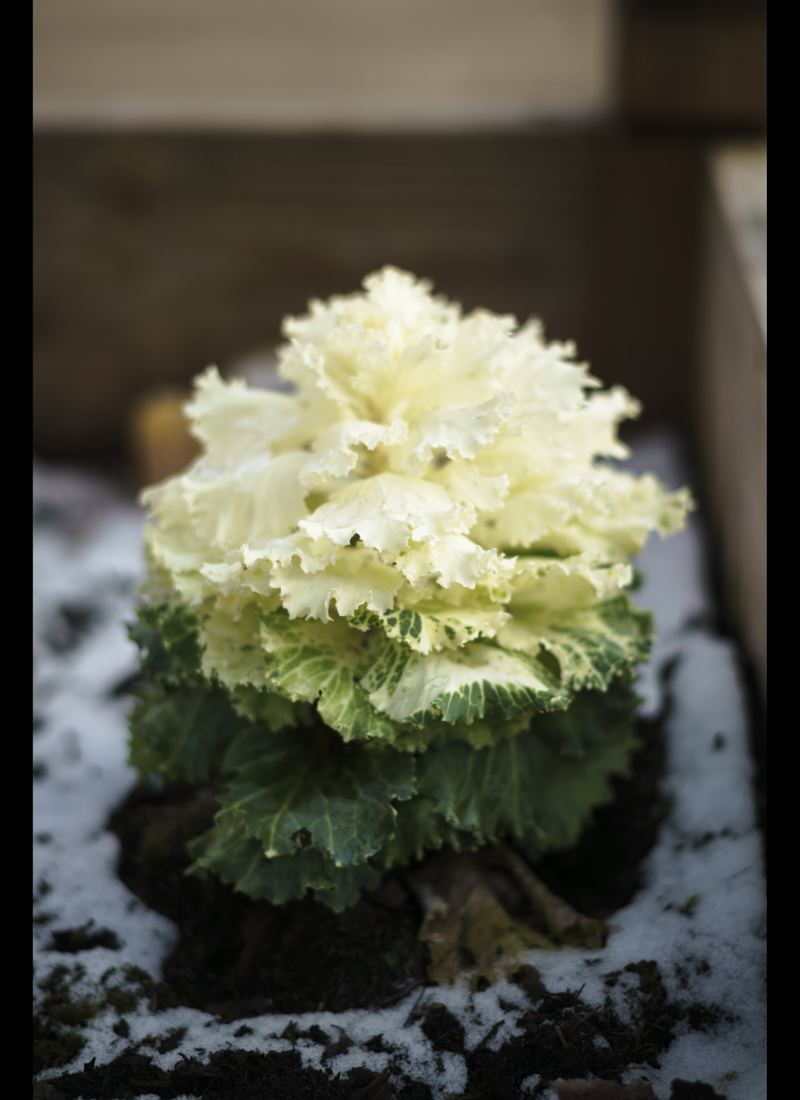
Other Articles
- Review: Voigtlander 75mm F1.5 Nokton VM
- Guide to the best Portrait Lenses for the Sony a7 series
- Guide to Adapters for Manual Lenses on the Sony a7 series
This site contains affiliate links. If you make a purchase using any of the links marked as affiliate links, I may receive a small commission at no additional cost to you. This helps support the creation of future content.
Nehemiah
Latest posts by Nehemiah (see all)
- Guest Review: Pentax SMC FA 31mm f1.8 Limited - November 23, 2020
- Leica: M-Summilux 75mm vs R-Summilux 80mm - October 14, 2019
- Leica M Summilux 75mm f1.4 - October 2, 2019
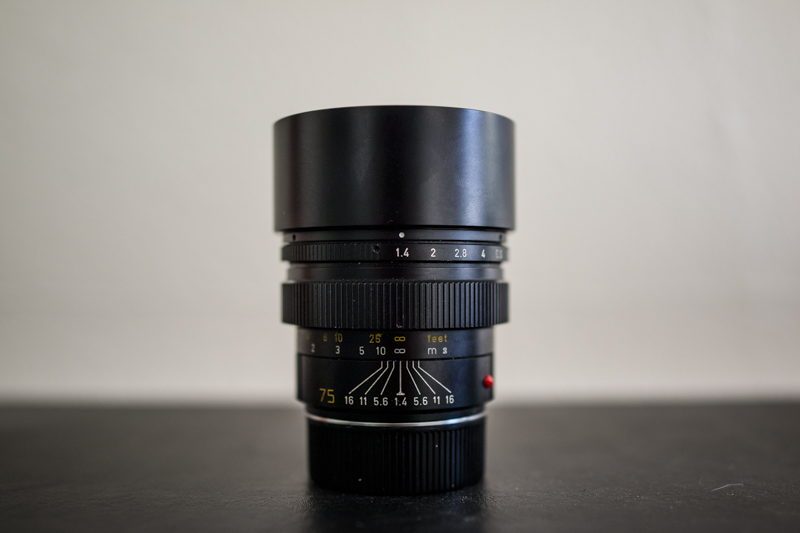
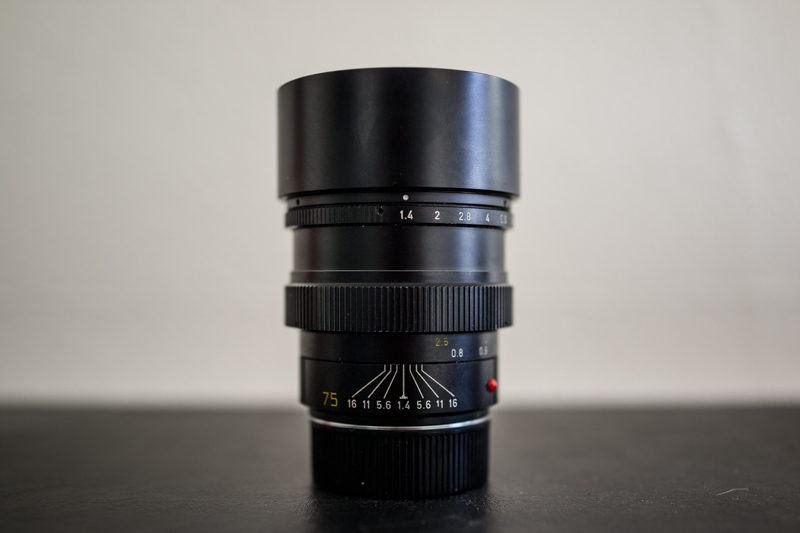

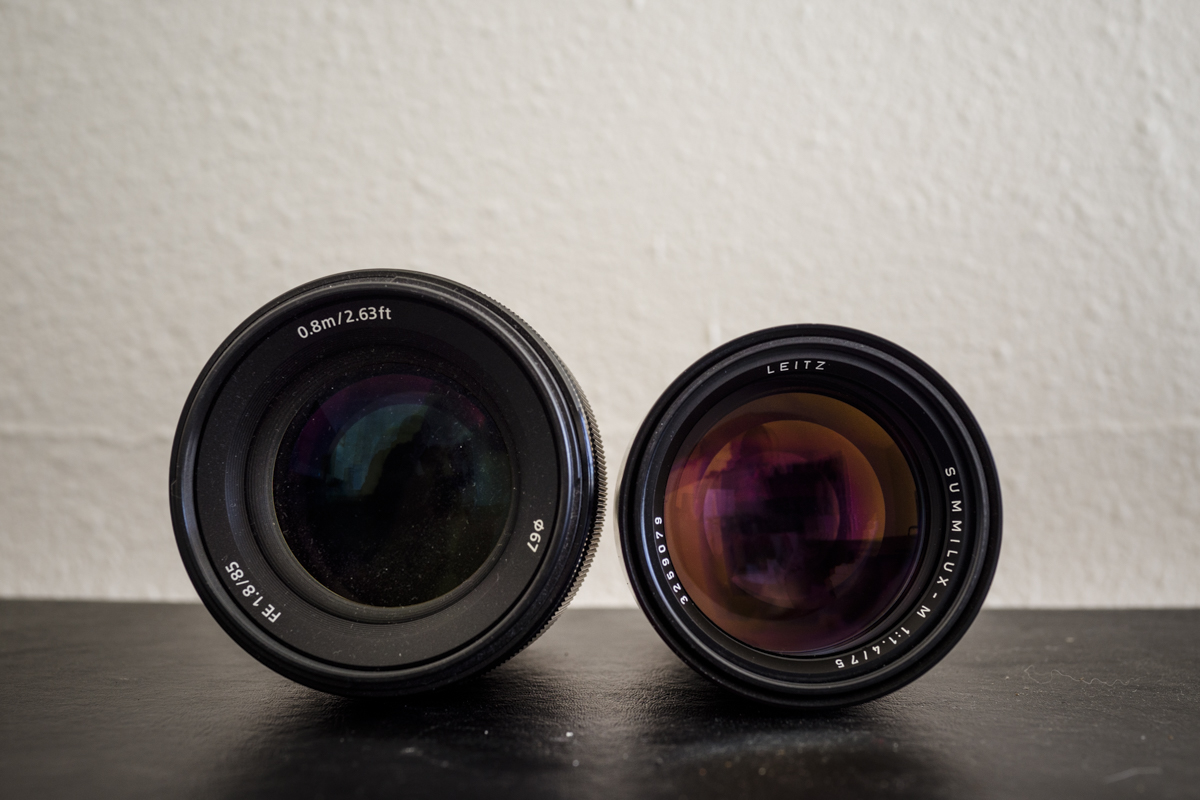


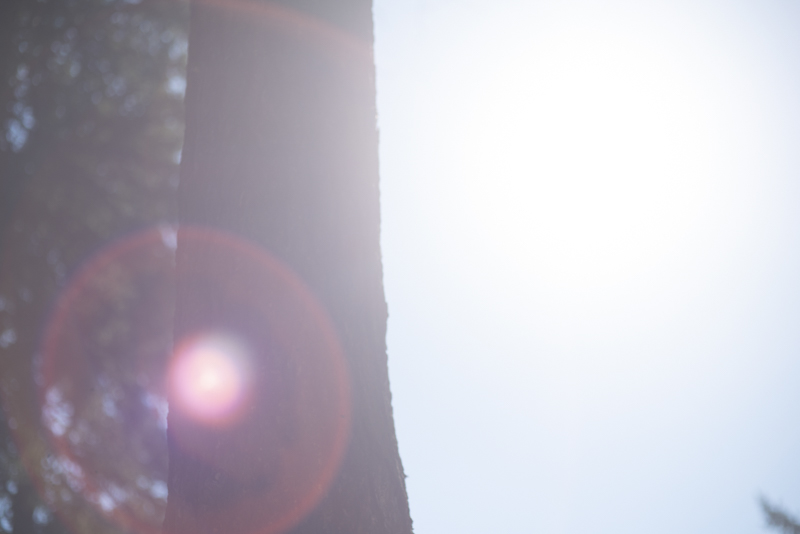
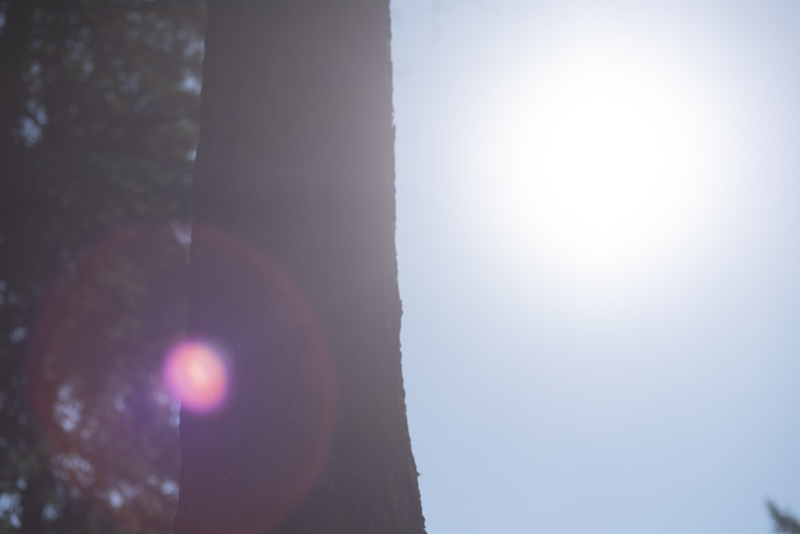
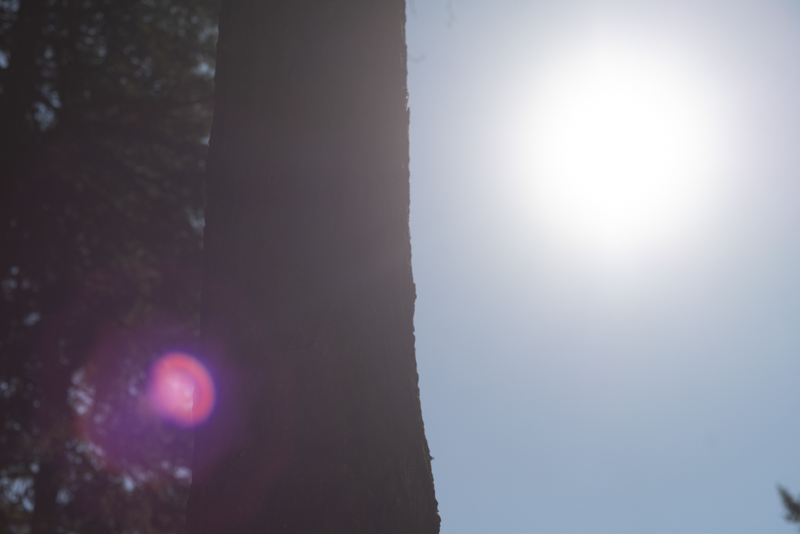
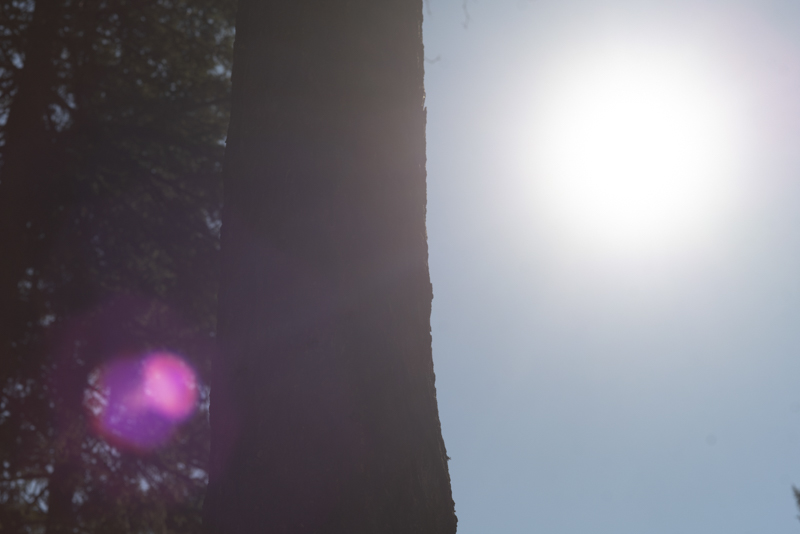
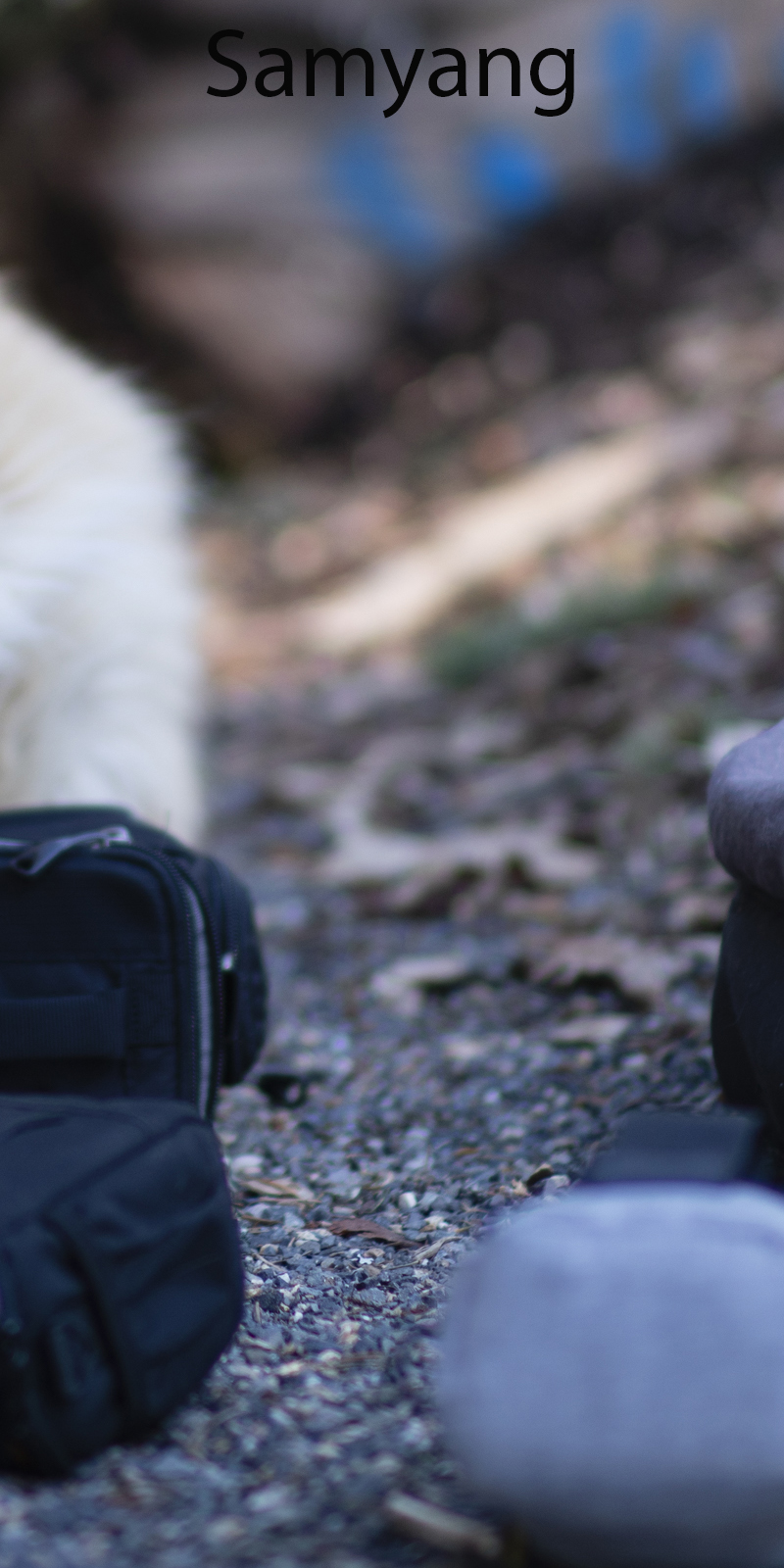
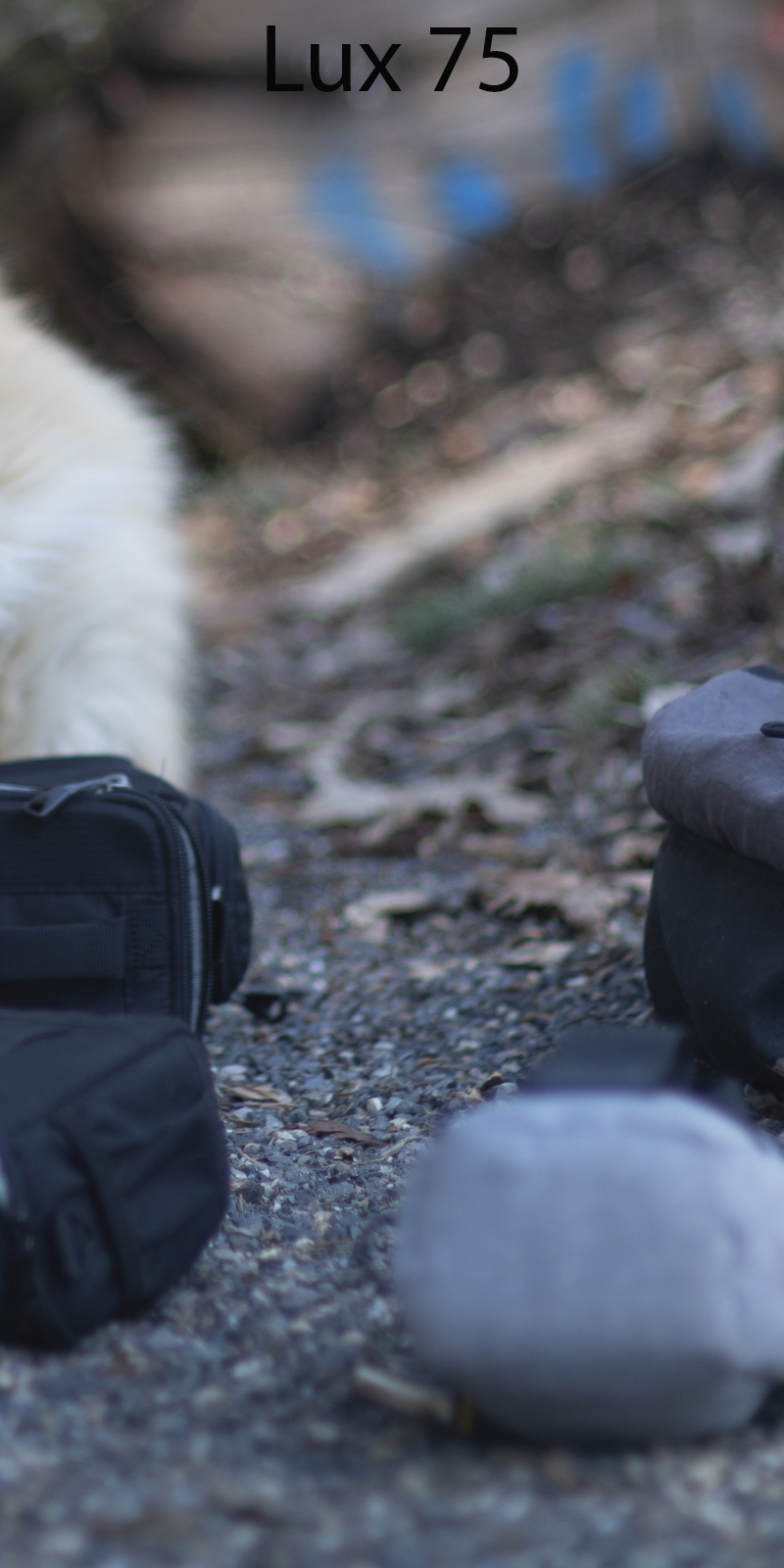



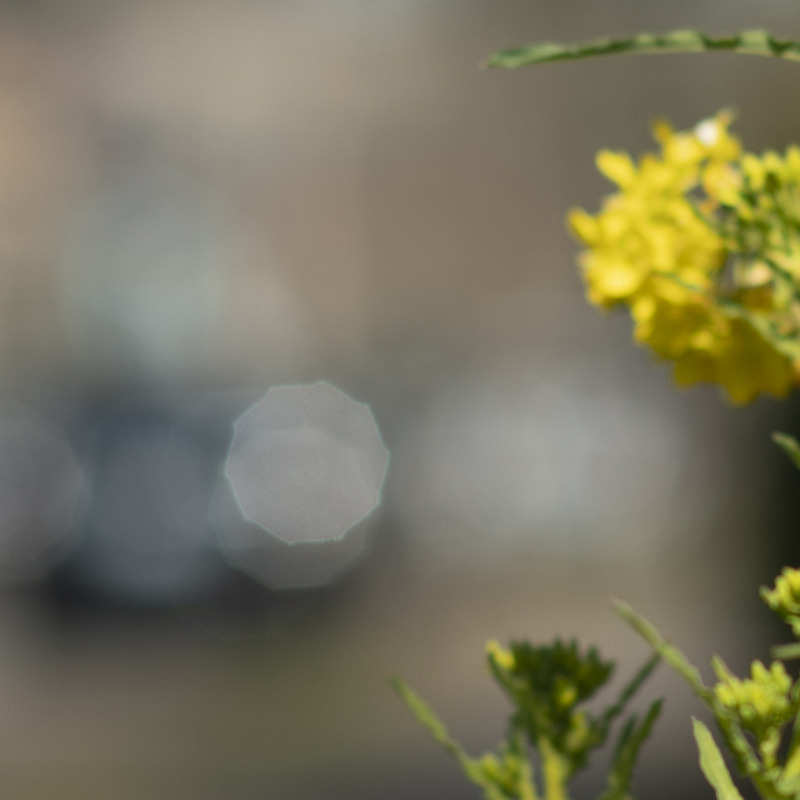



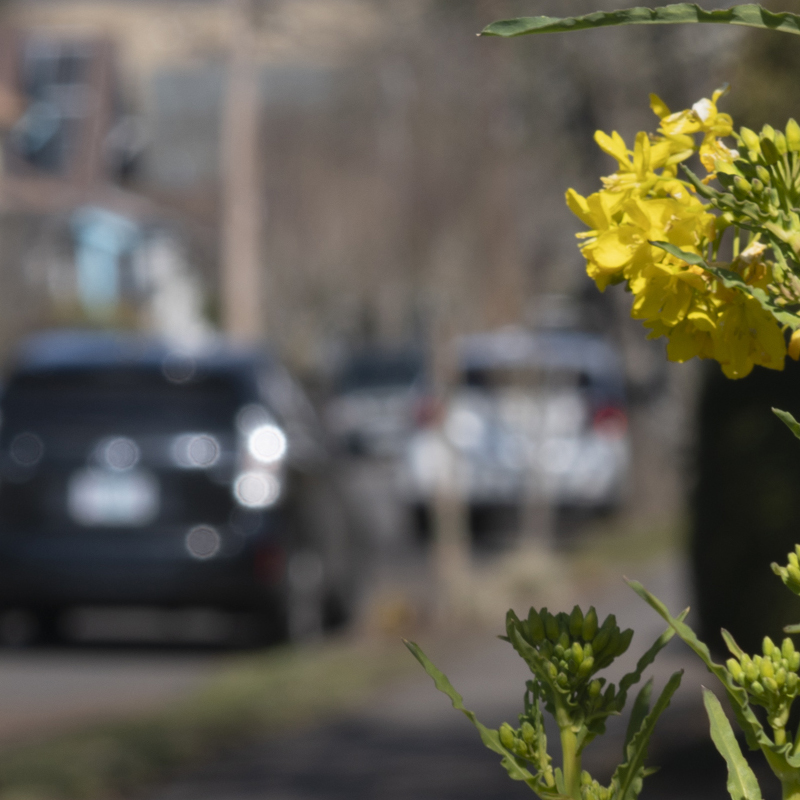
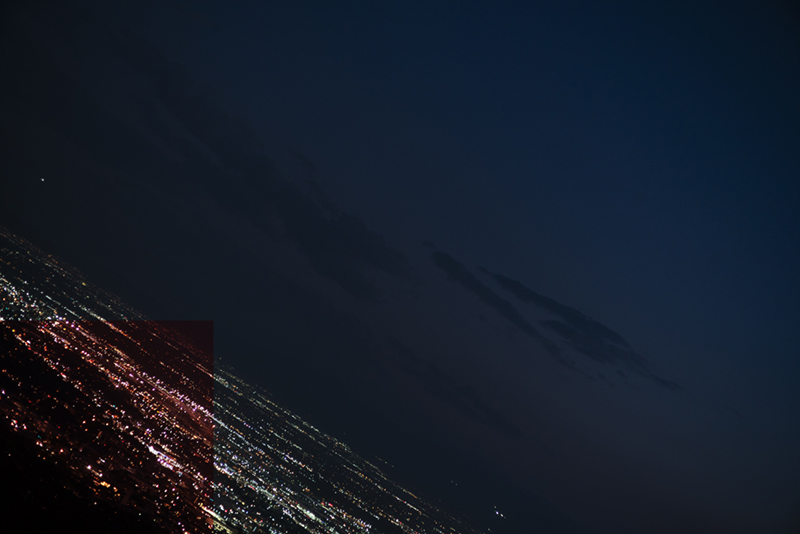

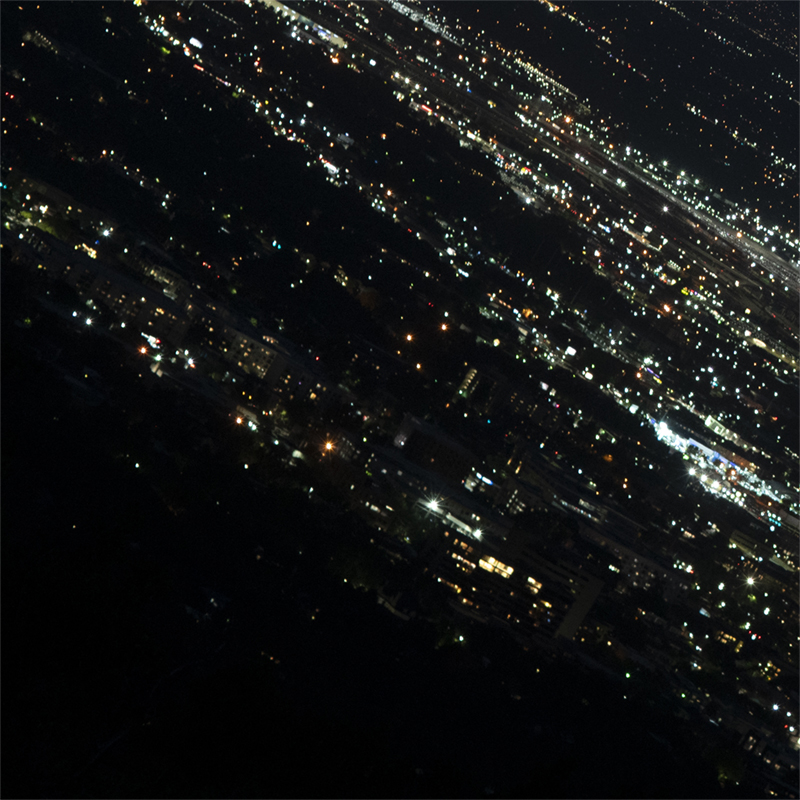

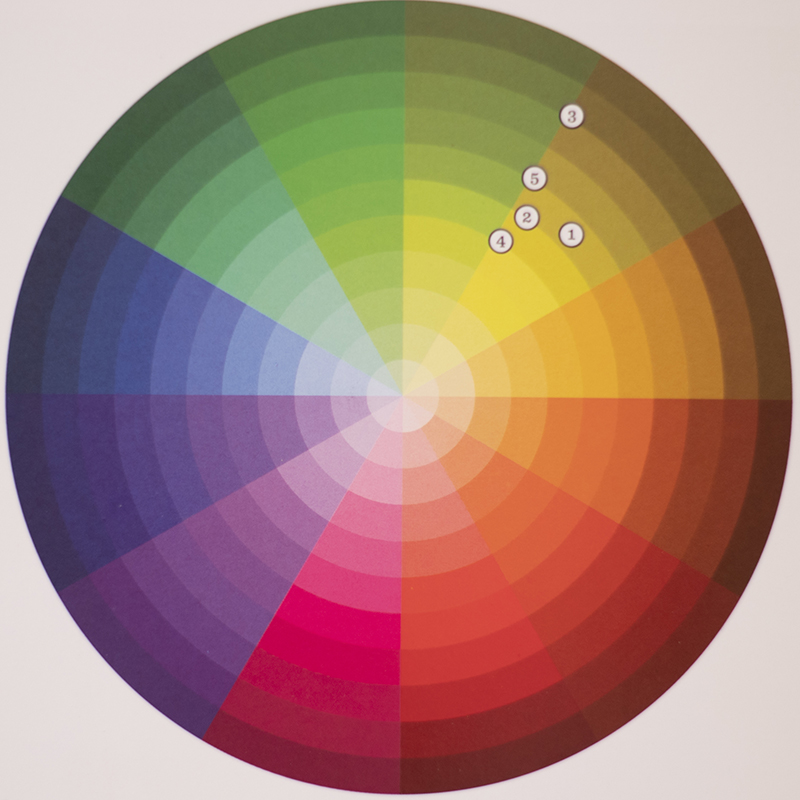
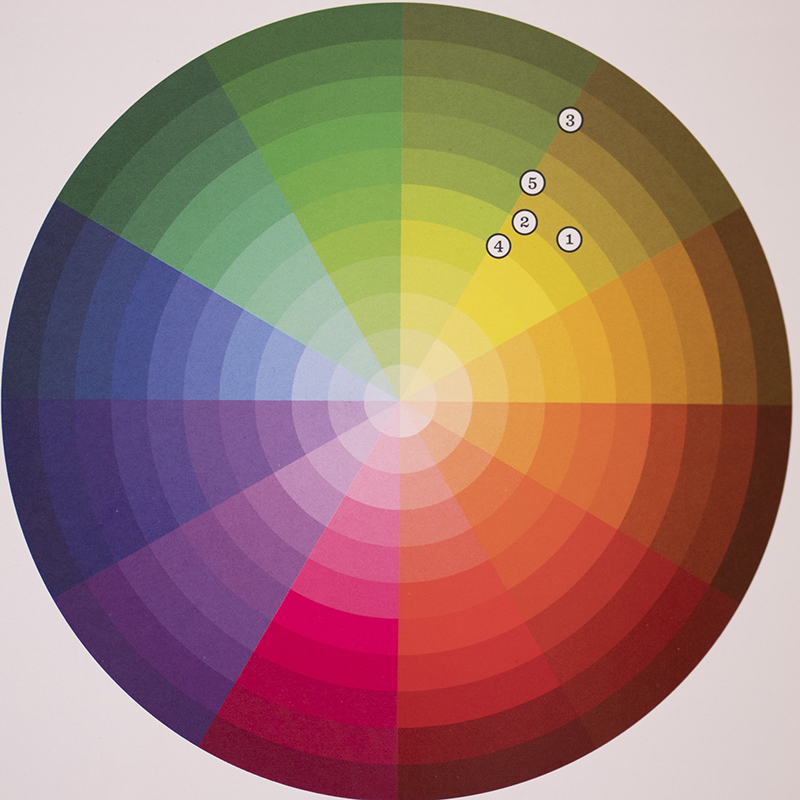
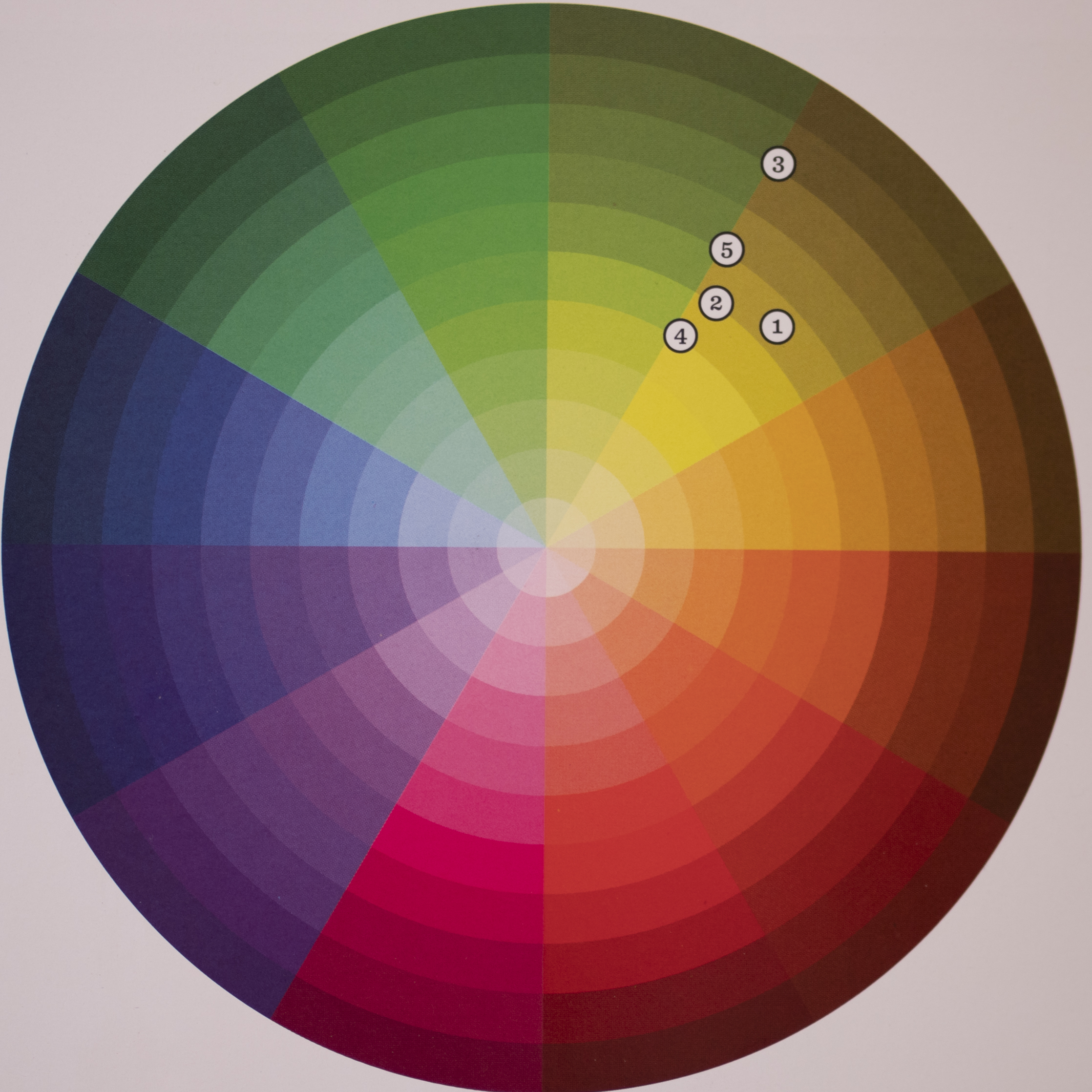
Impressive work and nice sample images, especially the color science part was very interesting to read 🙂
Thanks Juriaan! Glad you liked it.
I actually did significantly more testing on color with six different lenses at three separate apertures and lighting, for hue and luminosity too, but it was far too technical and long–I didn’t want that hijacking the review. It already hijacked my time?
Maybe sometime if the weather is awful or I get sick I’ll post it 🙂
Hi Nehemiah,
Thanks for writing up such an extensive review. I appreciate the effort you put in (albeit at the same time it’s a tribute to one of your favourite lenses). And to be honest I will have to read it again several times to fully comprehend all the technicalities!
In one of the first paragraphs you mention MF with this lens on Sony bodies. You say that you find it easier to focus on an A7s and A7m3, compared to the A7r2. Why is that, could you please elaborate?
Best regards from the Netherlands,
Tim
Absolutely Tim! I had been putting it off for a while–life is busy.
In my experience, there’s some interplay between EVF magnification, resolution and some type of lens resolution/AA filter balance for manual focusing. I know a knock on the A73iii when it came out was it had a larger EVF magnification wise, but wasn’t higher resolution. I really liked this on mine. If the camera/lens is out resolving the EVF, we get shimmering pixels which I think is the best way to MF on Sony cameras. So on the a7iii I was getting a roomy low res EVF with lots of shimmer pixels.
The A7r2 seems to have a smaller EVF and not shimmer too well, maybe because the EVF is small but it’s very hard to outresolve 42mp.
I noticed the a7r3 did shimmer, but the magnification was quite a bit better than my r2, so it was much easier to see things coming in and out of focus and to differentiate the shimmer pixels.
The a7s seem to be outresolved somewhat easily by the lens and it shimmered quite a bit.
Lastly, Derek (who wrote reviews for this site) has a modded a7 which I have used multiple times. The EVF offers terrific shimmering because they remove the AA filter (or something). It’s a breeze to MF with.
Maybe someone can explain more technically, I am just going off experience/thoughts. Despite the a7r2 is my only body (sometimes I buy/sell for an event/trip), I think the EVF and manual focusing are the things that annoy me the most. And the mushy shutter.
Could it be that you (and others) approach your photography with more intentionality when using this lens? The same effect many feel, including me, when shooting film versus digital? Film is objectively worse but the photos I take with film are objectively better.
hmmm…not specifically this lens for me. But I find greater intentionality with MF than AF, and with primes over zooms.
Interesting point on film vs. digital, and not surprising to me.
This lens looks and sounds awesome. Not sure why the Canon 85mm f1.2L II is not included 🙂 It is also a legend by itself
I owned and shot a Canon 85 1.2, though an FD. It was quite a lens, I enjoyed mine. Distinctly different rendering style than the 75 Lux, closer to the GM 85 with highly abstracted bokeh.
There’s are several lens I could have included, but I tried to keep it native or recent manual focus options. I also didn’t include the Minolta 85 1.4 Limited, which is a favorite of mine, second only to the 75 Lux!
Would love to see a review of the MS Optics Sonnetar 73mm! A friend of mine purchased one and it’s really quite an intriguing lens, being so small, light and fast, with optical compromises some would consider desirable wide open.
I’d love to see a review too—but they are a ton of work!
I pre-ordered mine and haven’t been disappointed—I use it frequently. And I do love the character.
Not a full review by any means, but this thread has some illustrative sample images and infinite crops from f1.5-f11:
https://www.fredmiranda.com/forum/topic/1568520/1
Another review which is clear testimony to the total overrated-ness of the totally overpriced Leica stuff.
The believers of the Leica cult always have to resort to wishy washy stuff like “but the Leica colors” to justify their spending of ridiculous amounts of cash. While we see in this review that there actually color differences, we could as well take lenses from other manufacturers and see more saturated colors or whatever. And additionally the camera/sensor the lens is mounted on plays an important role. Remember people talk about “Sony colors”, how they are inferior? These people most probably dismiss this review here altogether… it’s so ridiculous 😀
I have shot and owned other Leica lenses and not been impressed. I purchased a 35 Lux ASPH but was quite disappointed all things considered despite its reputation and sold it. The 75 Lux is the only Leica I own.
I think no matter what body you put a 75\80 Lux on, people seem to love it over the last 30 years. And it makes for gorgeous black and whites too.
It’s not a cult. I clearly stated, in all caps, I don’t recommend the lens for most. There are many people who are brand agnostic and adore the 75 Lux. I fully realize it’s technical shortcomings.
Have you shot the lens?
You probably misunderstood my comment. I by no means meant that you are a member of or supporting that “Leica cult”. I appreciate that you approached the review in a very objective way and really tried to find what makes this lens so special and thus expensive. But you didn’t find anything substantial – so your review helped to expose that Leica cult further.
Maybe I did misunderstand. Not sure where the line is between letting test results dictate if a lens is special versus actually shooting it and letting the images speak.
And to be fair, my assessment of color, while more than most reviews, is not all all exhaustive. Then again, it might not reveal anything to special by metrics.
This 75 Lux doesn’t test to well, but most fast legacy glass do not compared to contemporary options. I’ve see lots of post citing smooth bokeh and sharpness wide open over the years. That’s simply untrue of the Lux.
Either way, thanks for sharing your thoughts.
Hi. What you are experiencing is the bad fit of old rangefinder lenses to modern digital cameras. That is why Leica has purposefully built sensor stacks, that imitate the properties of film in oposite to digital sensors. That was also the reason why the Leica M8 was only APS-C. Microlense arrays where not as good as today. Old rangefinder lenses perform much better on rangefinder style cameras 😉 If you want to experience the full potential of Leica lenses, you have to buy a Leica body.
No, you don’t.
Owning a Leica M10 now I would rather recommend to get a kolari modded Sony camera…
Nice review, thanks!
I had Samyang 1.4/85 in Nikon mount, first generation w/o electronic contact. I agree it has one of the smoothest bokeh out there. But my lens was designated as “aspherical”, while you have mentioned “non-aspherical” in the text above? Are we speaking of same lens? Please clarify, thanks!
You’re right Jovan. It’s aspherical. I’ll fix that.
Thanks for the catch!
Great review, thanks.
I own this lens and it’s my absolute favorite portrait lens.
The conclusion sums it up very nice. It’s by no means a perfect lens, but I love the pictures I get from it and the look that is achieved by this lens.
Glad you liked it Tom!
Really lovely images here! Can agree the rendering looks very pleasing for portraits. It would be interesting to see a side-to-side comparison with the Voigtlander 75mm 1.5 to judge how the rendering differs.
Thanks Derek!
Take a look at this thread for some discussion and a couple photos comparing the CV 75 1.5 and 75 Lux:
https://www.fredmiranda.com/forum/topic/1608121/6?b=2
That is useful Nemehiah! Yes, it shows clearly different rendering between the two. To my eyes, the Summilux has a more unique character, especially with the bokeh. The Voigtlander is impressive for the price and size and has a more smooth modern rendering, similar to the two 85mm lenses you used in this comparison.
I agree Derek. As I stated in my “Alternatives” section, the CV 75mm f1.5 is a great option, but it’s definitely a better corrected optic. I’ll get my hands on one at some point, but I am content with my 73 Sonnetar/75 Lux tandem, so no real urge.
I’m in the market for a 75mm and I’d really like to see a more in-depth comparison between the Lux and the Voigtlander.
Even though I own a couple of their lenses (15 and 21 f1.8), I’ve never been a big fan of Voigtlander color rendering. I personally prefer warmer and saturated colors. But… the Lux is about 4000€ where the Voigt is 1000€, can’t really justify the price even though from what I can see the Lux would be my ideal choice, despite the shortcomings (or because of the shortcomings?)
Also the focus shift may be a problem for me (I shot mainly on a M10)
Decisions, decisions…
Very good review of the lens. As a user of this lens I would say yes, this lens produces ‘different’ green, blue, red, and orange (you did not mention this though). I especially like its blue tones. I also see its blue and orange tones capacity in the images taken with the Tele-Elmar 135mm f4. Apart from bokeh and that unique rendering, the 75Lux produces that special “Leica Glow” in different areas in the images especially on the sharp edges. You should look closely to see this effect! Our perception sees/receives this unconsciously though (maybe because of this, we like this lens). This lens always surprises you, and this situation creates a joy to use in shooting! You are not only a photographer with this lens, but a painter and a magician at the same time! I appreciate your wonderful review, thanks. Best regards, Metin Colak.
Glad you appreciate the review Metin!
I didn’t mention the oranges as I only measured the 3 primary colors the camera “sees.” But, given the Lux leans to green and red and lesser to blue, you can expect a different orange. That’s why the palate section was included.
I also discussed the softness and lack of harsher borders in the color summary section, though maybe I should have been more explicit.
I do agree with you though. Special rendering, terrific color 🙂
I m a happy owner of ms 73/1.5 too. It takes 49mm filter inverted.
Nice! Can you explain/specify inverted inverted filters?
I’d might like one but am not familiar.
The lens itself with exposed thread for hood installation. You can screw in any 49mm filter on it with the opposite side (the side takes lens cap), and then install the hood on the filter thread. Hope it helps.
That does help. Thanks Mick!
Could you please tell us what lens you used to take the first picture in this article (of the lens, at the very top)? The rendering is just soo beautiful. Great article, really enjoying reading these reviews, wish you had a youtube channel for commuting folks (bay area traffic affords me lots of time on youtube).
Glad you like the review. Believe Phillip and company have done some podcast(s) you might check out.
The first photo is shot with the ZA 55 near MFD and cropped 🙂
I really enjoyed your review and agree with your assessment.
I have the lens and bought it well before reading your review. I might have been put off if I had, but that would have been a mistake because your final conclusions chime completely with my overall experience.
I use it in combination with a standard 35mm Summicron. The standard lens is my workhorse, whilst the 75mm is the slow, thoughtful and more complex option.
As with everything, the output is reflected in the effort.
I will never sell it.
Again the problem of old rangefinder lenses on digital cameras. Bigger flange distance and retrofocus construction make SLR lenses more fitting to digital sensors. If you want to unlock the potential of rangefinder lenses, you have to buy a Leica. they use sensor stacks that are compatible with film day M lenses. That is what they call the heritage:-)
Also an option is the Colari Vision Sony sensor stack mod, but not as effective as buying a Leica body.
You should check on your sources, many of the wide angle lenses have less color shift issues on Kolari modded cameras compared to digital Leicas…
If you look around enough I think you’ll find Bastian is correct. With a sensor stack mod, Sony cameras are a better option in measurable quantities of technical IQ and price. And that’s not including a host of features large and small.
If you prefer the RF experience that is great but it is a preference, and an expensive one.
Hi Phillip,
I’ve only just found your reviews and I really have to comment on their exceptional quality. It is rare in the day of the internet to find decent and credible reviews made by someone who actually knows what they are talking, about as opposed to someone learning on the fly and presenting deeply flawed results anyway. Your reviews really rise well above the sea of amateur mediocrity.
I completely concur with this review in particular, one of my favourite lenses of all time and one that I will never part with. It really is a very unique lens—mixing objective and subjective characteristics to create something very special that will likely echo down through time as one of the best of all time. This review objectively explains why—Very well done.
Hi David,
I have to pass on the compliment to my team and contributors like Nehemiah who invest a lot of their time and who really know their stuff. We also learn a lot from each other and really try to base our assessment on actual evidence.
Many times, photographic lenses are tested by capturing images of resolution charts taped to a wall. However, the optical designers at Leitz calculated Leica lenses for photographing actual 3D objects, so they were not keen on achieving flatness of field and astigmatism. Thus, Leica lenses often scored poorly on camera magazine tests. The optical designers at Leitz paid attention to edge spread, which contributed to the 3D imaging characteristic of the Leica lenses.
Astigmatism sucks as much on a 3D Object as on a flat one.
Leica fans never run short of excuses for poor test results.
Thx so much for your very impressive insight to this legendary lens. But please let me ask a different question: you write that you like/enjoy the Sonnetar lens of MS Optics. Could you share your experiences? Thx again, kind greetings, Michael
Thanks for the kind words Michael!
I absolutely love the MS-Optics Sonnetar 73 1.5.
But it’s the kind of lens that not everyone (or most) will appreciate, even more than the 75 Lux. But for me, there’s nothing else like it on the market. Most will be happier with a Samyang 75 1.8 (AF) or Voigtlander 75 1.5 (MF).
Aside from the distinct character, the Sonnetar only weighs 196g, and I use it as part of my tiny kit of a Contax G 21/2.8, a CV 35/2 and Sonnetar 73/1.5. It’s nearly exactly the same height as a CV 35 1.7 but thinner. I’ve been using mine consistently since it was released.
It structurally draws like the ZM 50 1.5, maybe a bit smoother at comparable apertures, probably because it’s longer, but with distinctly different colors and contrast. More subdued with good global contrast but mild micro-contrast with lovely tones. I find the files have a cinematic quality if you don’t over process them–it’s look you can’t get with modern CV or ZM or Sigma which is just a difference, not a good/bad. The ZM 50 1.5 has unbelievable pop and micro-contrast centrally starting at about f2 I find. The Sonnetar has a similar contrast bump at f2, but never pops like the best Zeiss glass.
I’ve used the Sonnetar primarily as portrait lens at 1.5 to f2, general purpose tele, shallow DOF work and occasional landscaper. It resolves the entire 42MP FF sensor into the extreme corners stopped down. It also offered full coverage with no hard vignetting on the GFX 50R. Mine is perfectly centered.
The haptics are poor though–hard to focus and change aperture independently as the rings are coupled. This forces you to slow down a bit, which I do find annoying. You’ll get rainbow flare with the light source just outside the frame and veiling flare at times, and the MFD is a bit long (1 meter), though I used a close-focus helicoid to address that. Build quality is good, but of a different type than most modern mass produced glass.
I am hoping to review it–maybe not as extensively at this review, but I’ve just made a site not long ago, so that’s the next item on the agenda. Hope that helps 🙂
*this review = the 75 Lux review
I have a Leica 75mm f 1.4 that was given to me as a gift and 20 years ago and have only used it once for portraits on 100 asa print with the M6 rangefinder. I lucked out with great near sun set light with a soft flash fill. They are of my sister wearing a red and yellow dress and holding a brown/yellow violin and with pink flowers in the background. The pictures look unbelievable. I used f3.5. I agree with some of the other comments that you will get different results with the a Leica rangefinder because it is designed to be used with this lens. It does have sort of a glow and incredible soft and vibrant colors. I do not think it is overpriced as you can not get this result with other lenses. I want to see what happens at f1.4 with black and white.
I have been looking for a compact short telephoto and picked up the new Pentax HD FA 77mm 1.8 this week. So far, I’m finding it to be just what I was looking for. But I would love to see it thoroughly reviewed and compared with alternatives as you and others on this site do so capably. Any chance of that happening? I know you like this focal length and also other Pentax limited lenses. I’ll be happy to loan you my copy.
I agree. It would be so interesting to see the Pentax Limited FA 77 1.8 against the Voigtländer and the Leica Summilux!